

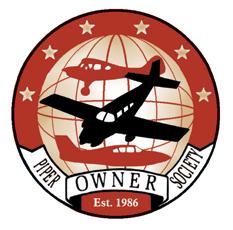
The Official Publication of the Piper Owner Society Since 1986 www.piperowner.org www.facebook.com/ PiperOwnerSociety PIPERS MAGAZINE $9.95 US December 2022 CHEROKEE 180 GLASS PANEL UPGRADE Reliable Ag Workhorse Pawnee Brave Corrosion Screw
J-3, C65 U71163-000 $1,129.35 PA-11, C90 ............... U10576-000 ....... $990.08 PA-12, PA-14 U10070-000 $1,213.78 PA-18, Lyc 150hp ..... U12351-015 ....... $911.05 PA-20, Lyc 115-125hp, 1950-1951.. ......... U11786-000 .... $1,561.55 PA-22, Lyc 150-160hp, (S/N 3387 and up) and Colt................ U11786-015 .... $1,643.72
Wing Navigation Light Bracket






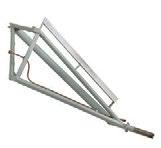




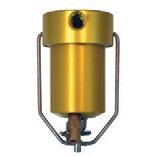

• For use with Grimes model E light or Whelen U12560-000 ....... $129.84

Complete Piper Gascolator
PA-20/PA-22 Landing Gear
• All landing gear is sold uncovered
PA-20, Left L13189-000 $1,814.57 Right L13189-001 $1,814.57 PA-22, Left ............... U13016-000 .... $1,858.68 Right U13016-021 $1,858.68
•
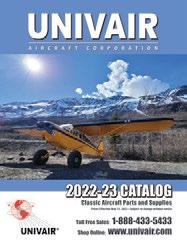
•
PA-11, PA-18 ............ U10802-000 .... $1,673.33
PA-18 U13716-000 $1,950.61
PA-20, PA-22 ............ U11958-004 .... $1,613.79
PA-20, PA-22 U13778-000 $1,979.79
PA-22 ....................... U15127-000 .... $1,566.16
FAA-PMA Parts For Piper Cubs and Pacers FREE SHIPPING on orders over $300. FREE FREIGHT on orders over $3,000. Restrictions apply – see our website for details. 2500 Himalaya Road • Aurora, Colorado 80011-8156 Info Phone .............................................. 303-375-8882 Fax 800-457-7811 or 303-375-8888 Email .................................................. info@univair.com Toll Free Sales: 1-888-433-5433 Shop Online: www.univair.com AIRCRAFT CORPORATION Visit our website to order your free Univair catalog. Foreign orders pay postage. FREE CATALOG ALL MERCHANDISE IS SOLD F.O.B., AURORA, CO • PRICE AND AVAILABILITY SUBJECT TO CHANGE WITHOUT NOTICE • 09-22-22 Whelen Lighting Strobe Head, Clear A470A-W $241.80 Strobe Head, Red.............. A470A-R ..... $258.96 Power Supply
$830.70 Whelen Strobe Lights, Red HR-CFA-14/28R $468.00 Red/White..........
..... $468.00 White HR-CFA-14/28W $468.00 Flexible Oil Pressure Line For most early Pipers U71061-000 $135.31 Wheel Parts and Assemblies Wheel Base .................... UD10-12 .... $1,134.18
8.00 x 4 wheel base with races for Pipers with
axles
solid aluminum
parts and assemblies available for
wheels
for PA-18 and PA-22
Dome .............
..... $487.04 Front Plate
Back Plate ...................
..... $233.02 Complete Assembly
$722.25 Short spinner also available • Call for details
...................
A490T-CF-14/28
HR-CFA-14/28S
•
1¼-inch
• Machined from
billet • Separate
Goodrich
Spinners
Spinner
U14422-000
U14426-000 $178.71
U14424-000
U14422-A
Gascolator
U14330-002 ..... $283.55
...............
Set
• For J-3, PA-11 thru PA-25 • Metal bowl with quick drain J-3, rubber tailwheel $179.20 PA-18, 4-leaf PA18TWS4L $200.83 PA-18, rubber
PA18TWSHR .... $190.14 PA-18, pneumatic PA18TWSPNEU $190.14 PA-20, 135hp $221.33 Tailwheel Spring
All Metal Nose Cowls
Check website or your parts manual for exact serial number applicability
More cowls can be found on our website
Heavy Duty Adjustment Screw Heavy duty screw especially recommended for ski planes, seaplanes, glider tugs, and banner towing. Adjustment Screw .......U42961-102 ..... $106.02
PA-18, 20, 22, 25 $454.89 PA-25 Square End $989.19
Hydrasorb Shock Unit
Stabilizer Adjust Yoke U42692-000 $272.65
Engine Mounts Find more on website!

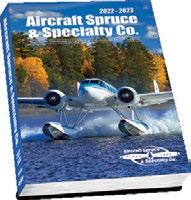
























www.aircraftspruce.com Call Toll Free 1-877-4-SPRUCE Aircraft Spruce is the leading worldwide distributor of general aviation parts and supplies. Our orders ship same day, at the lowest prices, and with the support of the most helpful staff in the industry. We look forward to our next opportunity to serve you! ORDER YOUR FREE 2022-2023 CATALOG! 1000 PAGES OF PRODUCTS! FREE SHIPPING! MOST ORDERS OVER $350 IN LOWER 48 STATES …the heart of your aircraft
By Bill
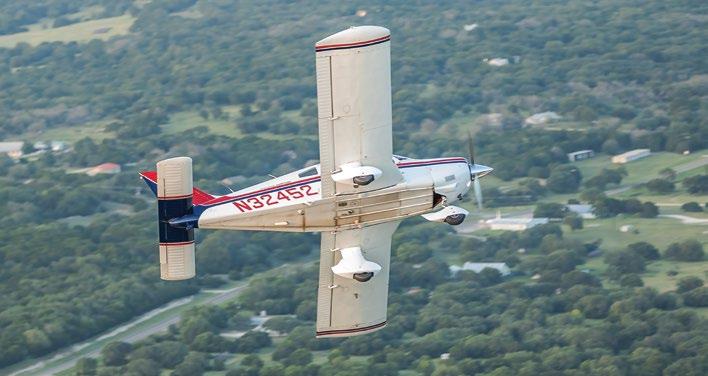


4 PIPERS DECEMBER 2022 Vol. 35 No. 12December 2022 The information presented in PIPERS Magazine is from many sources for which there can be no warranty or responsibility by the publisher as to accuracy, originality, or completeness. The magazine is sold with the understanding that the publisher is not engaged in rendering product endorsements or providing instruction as a substitute for appropriate training by qualified sources. PIPERS Magazine and JP Media LLC will not assume responsibility for any damages or harm arising from any information published in PIPERS Magazine, on its forum, or via other member support communication channels. Our advice, and the advice of our writers and our staff, is not intended as the final word in safety or maintenance; always consult your A&P. PIPERS MAGAZINE On the cover Photos of Pawnee Braves courtesy of Laura Alleman. For more photos and information about the Brave, see page 8. 8 Featured Plane Piper Pawnee Brave 400 A Pawnee to South America
Cox 18 Avionics New Pilot Gear
22 Never Run It Dry How to Manage Your Fuel
Cox 26 Eliminate Exterior Screw Corrosion By Scott Sherer 30 Legacy to Glass Cherokee 180 Panel Upgrade
Weaver 46 Hangar Tip Handheld Transceivers on a Budget
MEMBER ACTIVITY 36 Member Q&A 40 Member Photos 42 News DEPARTMENTS 6 From the Editor 45 Ad Index & Website Directory 8 22 30
By Bob Hart
By Bill
By Tom
By Scott Sherer


What’s the Mission?
What’s the mission? That im portant, three-word phrase is the starting point for so much of general aviation. Aircraft de signers make intentional tradeoffs to achieve various perfor mance parameters depending on an aircraft’s predominant mission. Consider the Pawnee Brave, for example. Its unusual shape and configuration were specially developed to accom plish one purpose exception ally well. It’s not intended to travel cross country, get maxi mum fuel efficiency, fly at high altitudes, carry passengers, or go anywhere fast. But it excels at what it is designed to do — spray crops.
While the Brave is a humble working machine and not a flashy hot rod, its engineer ing is ingenious. Consider how the design had to factor in a constantly changing weight and balance. The pilot takes off with a heavy load of chemicals, but the weight drops continuously as the chemicals are dispersed. Not only does the weight change over time, but the plane has to compensate for shifting weight with each steep dive, climb, and tight turn. No doubt the engineers had to do a lot of problem solving to overcome those challenges. Yet, if you take a look at the Brave’s panel on page 12, you’ll see how simple and streamlined it is. It has just what it needs and no more.
On the other hand, Tom Weaver’s upgrade in “Legacy to Glass” (page 30) show cases an all-glass panel that makes his Cherokee 180 a high-tech marvel by com parison. His Dynon-equipped panel provides amazing capabilities. He can even take screenshots on his screen to use feedback from actual flights to teach students how to navigate and make the most of the digital wizardry that’s now available to the ev eryday pilot.
Over the years, the general aviation industry has continued to build on the capa bilities of various plane types, releasing STCs and other innova tions to help pilots perfect their mission capabilities. Different mission, different flight characteristics — all by design. Think of how far we’ve come in the last 50 years. We can only imagine what is on the horizon in the coming years.
The sky’s the limit!
MAGAZINE
Vol. 35 • No. 12
The Official Publication of the Piper Owner Society www.PiperOwner.org
MEMBER SERVICES
Account & Renewal Inquiries
Piper Owner Society PO Box 8551 Big Sandy, TX 75755-9766 membercare@piperowner.org 1-866-697-4737
Technical Support tech@piperowner.org 715-445-5000 ext. 123
*Provide Member Number
Member Forums Visit: www.piperowner.org (member log-in required)




Post questions/comments to: Aviation Director Scott Sherer Society A&P/IA Erich Rempert Website/Forum/IT Inquiries Information Systems Manager webmaster@piperowner.org
ADMINISTRATION
Piper Owner Society N7528 Aanstad Rd., P.O. Box 5000 Iola, Wisconsin 54945
(715) 445-5000 • Fax: (715) 445-4053
President Diana Jones • Ext.151 dianaj@jpmediallc.com
Sales Account Executive Steve Cook • Ext. 116 stevec@jpmediallc.com
6 PIPERS DECEMBER 2022
THE
FROM
EDITOR
Senior Graphic Designer Bill Kuffel Editorial Board Scott Sherer, Erich Rempert, Bob Hart, Scott “Sky” Smith, Scott Sellers, Mike Jones, Jim Curns Copyright © 2022 Aircraft Owners Group All Rights Reserved We proudly support EAA and AOPA. PIPERS PIPERS Magazine (ISSN 1052-5580) is the official publication of the Piper Owner Society. PIPERS Magazine is published monthly by JP Media LLC, P.O. Box 5000, N7528 Aanstad Rd., Iola, WI 54945. Periodicals postage paid at Iola, WI 54945 and additional mailing offices. POSTMASTER: Send address changes to PIPERS Magazine, P.O. Box 8551, Big Sandy, TX 75755. Address all Membership/Sub scription Questions and/or Address Changes to: PIPERS Magazine - P.O. Box 8551,- Big Sandy, TX 75755. Phone: 1-866-697-4737. Email: membercare@piperowner.org. US membership 1-year $59.00; Canada memberships 1-year $82.00 (US funds); all other countries 1-year $94.00 (US funds). Publications Agreement No. 40049720. Eighty percent (80%) of annual dues is designated for your magazine subscription. For your convenience, all links in this issue are available at piperowner.org/dec22. Visit that URL on your computer or scan this code with your phone or tablet.
Publisher Rocky Landsverk • Ext.156 rockyl@jpmediallc.com Editor Dan Brownell • Ext.154 editor@piperowner.org
Dan Brownell Editor

PIPERPAWNEEBRAVE400 PIPER PAWNEE BRAVE 400 A Pawnee to South America
By Bill Cox
Piston-powered crop-dusters don’t get much bigger. The Piper Pawnee Brave stood tall and massive sitting on the frozen ramp at Lubbock, Texas, a behemoth of a Piper. It was the biggest, single-engine piston-powered Piper I’d ever seen.
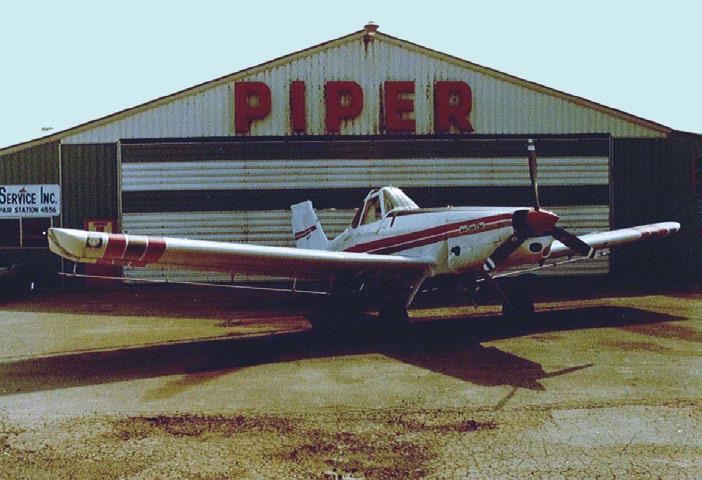

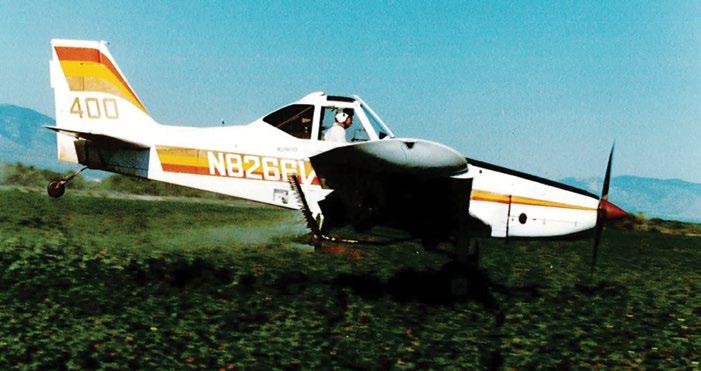
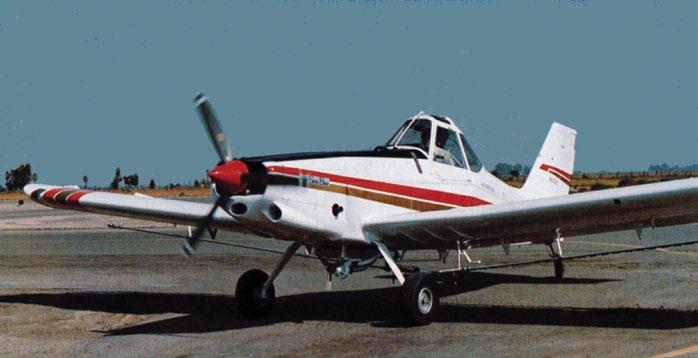
This was a pure, working airplane — a not-so-simple, utility machine, designed for agricultural application, towing gliders, or any other job that doesn’t demand speed over 110 knots, alti tude above 100 feet AGL, an autopilot, range beyond about 100 miles, seating for more than one person, pressurization, or air conditioning (but, in my case, a great heater, thank God.)
Normal performance parameters of speed, climb, range, and cabin comfort don’t mean much when you’re dusting crops at a specific speed, usually less than 90 knots and altitude, often with your wheels only a few feet above the ground.
Neither does appearance, fuel capacity, or aerodynamic so phistication matter much when no one cares how you get the job done.
Intentionally Slow
The Pawnee Brave’s long wings with what seemed a ridicu lous, six degrees of dihedral, splayed up at a steep angle on both sides and the long nose seemed to almost comically stretch practically to the horizon.
8 PIPERS DECEMBER 2022
Photo courtesy Laura Alleman
Photos below courtesy Johnston Aircraft Service johnstonaircraft.com
Despite its 400 hp Lycoming engine, the Pawnee Brave is a study in how to make an airplane fly slow. Fitted with spray booms under the wing, it was deliberately designed with virtually everything hanging out, the better to kill bugs in the process.
I’d flown the big Pawnee the day before, an informal checkout that had consisted of the dealer handing me the keys and point ing at the ramp with the comment, “It’s the red and white one.”
The checkout couldn’t be too much less complex, as there was only one seat and one tailwheel. Like a lot of pilots raised on tailwheels in the 1960s, that wasn’t a problem for me, but it seems the number of taildragger fans diminishes with each passing year.

The airplane’s king-sized, eight-cylinder mill was a question mark. I’d flown a Comanche 400 with the same powerplant and had mixed results. Hot starts had been a problem, but to be fair, I had less than 100 hours in the airplane, so perhaps it was sim ply my inexperience with hot-starting the big Lycoming IO-720.
As happens so often in West Texas during winter, the wind was whipping down the plain as I hit the starter and com menced to commit aviation. The huge Lycoming chug-a-putted to life and I S-taxied the big taildragger to the active runway.
400Into the Air
Like most crop dusters, the airplane’s top engine cowling fell away at a steep angle, the better to actually see the crops from a height of two feet, so at least I could follow the centerline with out having to S-taxi from left to right side of the narrow cockpit.
I zigged and zagged across the airport without incident. This should be fun, I thought foolishly, ever the optimist.
As it turned out, my “checkout” consisted of exactly one takeoff and one landing. My flight time in a squirrelly little Pitts S2A hadn’t even come close to preparing me for the big Piper, especially not in the gusting 25-30 knot winds that seem to live in Lubbock year-round. When I commented about the wind and weather, the dealer looked at me with that “Why-do-they-keep-sending-me-these-amateurs” ex pression, then put on his 10-gallon hat, hitched up his Levis, and muttered something about, “… these damned kids” un der his breath.
Randy Yost has been a spray pilot for more than 30 years and the Piper Pawnee Brave 400 has always been his favorite plane. It’s a family busi ness, so the family car fits right in with the plane and hangar Photo cour tesy Laura Alleman

PIPEROWNER.ORG PIPERS 9
But no one really cared much about winds or speed or weather on a crop-duster, right? Wrong! I cared, since I was to be its pilot, and my mission wasn’t to spray crops. As I stood on Lubbock’s slick, compacted December snow, feeling the winter wind of West Texas cut through my parka, I won dered why anyone would want to fly a 2-1/2-ton, 110-knot airplane 3,000 nm from Texas to Guayaquil, Ecuador.
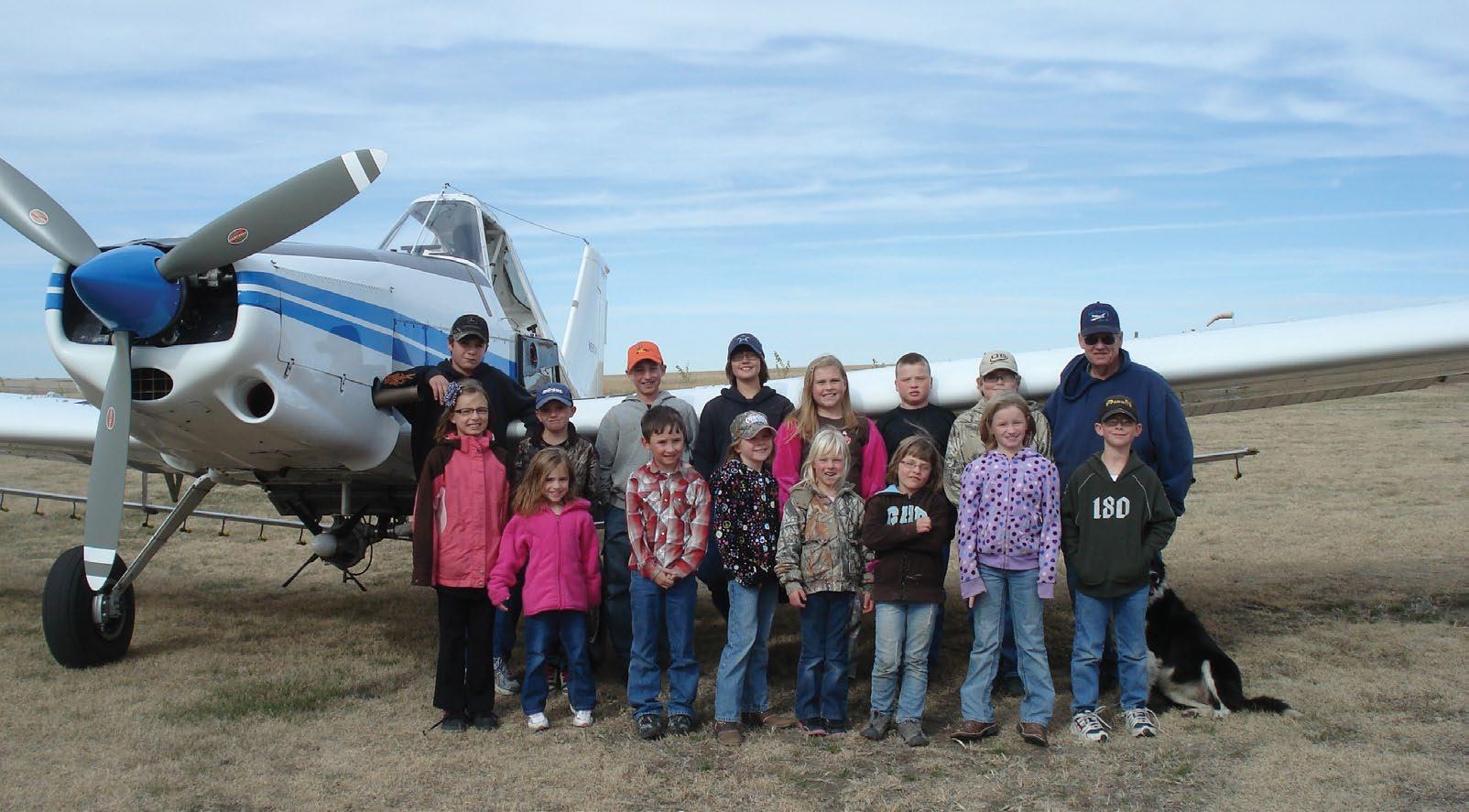
Naturally, these airplanes were bought and paid for by the good ole’ US of A, a feeble attempt to control the flow of cocaine back into the U.S. The day before, the dealer had mentioned, matter-of-factly, that a previous delivered Brave had two new holes in the wings when it arrived in Ecuador. Apparently, the drug dealers don’t appreciate someone flying airplanes above their coca plants.


Call it a masochistic sense of fun, I guess. Call it a belief in the airplane’s intended mission — drug suppression in Ecua dor and Columbia. Most important, call it a living, or at least, part of one. I shivered against the wind, hoping the weather would be more forgiving on the trip south.
South to America
The next morning, a low overcast signaled a typical early win ter day in Lubbock. ATIS was calling it 1,200 overcast and 15 miles visibility, temperature 21 degrees F, wind 230 at 25 with gusts to 40. The airplane buffeted in the stiff surface wind, de spite the weight of more than a ton of fuel. I had a full 86 gal lons in the wing tanks and another 275 gallons of ferry fuel in the huge hopper directly in front of the cockpit (temporarily plumbed to feed the engine). When the hopper was filled with its normal capacity of toxic drug suppressant liquid, the pilot (who usually supervised the loading of fuel and applications) needed to be especially careful not to spill any of that material on the cockpit. If he got any on the pilot’s seat and sat in it with out cleaning it very thoroughly, “ouch” might not suffice.
Piper’s Pawnee Brave 400 has been a mainstay of crop spraying for decades.
10 PIPERS DECEMBER 2022
Photos courtesy Laura Alleman
Randy Yost with kids on a field trip from a Cheyenne country school near Hayes, South Dakota.
No matter, I thought. My load was strictly avgas. I was eager to be off toward warmer, friendlier skies. I completed the run up and advised the tower I was as ready for takeoff as I’d ever be.
“Ready” was a relative term. Duster airplanes don’t normally come equipped with radios and instruments for ferry flying, so a hodgepodge of temporary avionics were scattered around me in the single-seat cockpit. An electric artificial horizon topped the left side of the panel, and a small, two-inch directional gyro was slung beneath the right panel, just above my knee. Sandwiched between the seat and right sidewall, the automatic directionfinder was mounted facing straight up, and the transponder oc cupied the same position on the opposite side. The single VHF nav/comm was bolted in place beneath the left panel. Despite this vertigo-inducing layout and my intention to keep the trip purely day/VFR, the extras were intended to provide a hedge against the unexpected. That’s assuming they worked.
Brownsville, Texas, was my first destination of the day, 700 miles away beneath the clouds. If all went well, I’d clear Cus toms, top off my fuel, and continue along the Mexican coast to ward Tampico and Vera Cruz, cut inland and cross the narrow est part of Mexico where the high jungle drops to near sea level, then track the Pacific coast down to Guatemala and negotiate the pass between a pair of semi-active volcanoes to Guatemala City for the second night. If luck was with me and there were no revolutions underway, I’d spend the third and final day flying southeast along the Central American coast past El Salvador, Nicaragua, and Costa Rica before traversing the Gulf of Pana ma to a landfall at Esmeraldas, Ecuador, and continuing on to Guayaquil.
So much for the original plan. After paperwork problems with Customs, I wound up spending an extra day in Brownsville before I was allowed to launch for Mexico.
Finally released and cleared, I left at sunrise and pointed the Pawnee Brave’s long nose down the Gulf Coast toward Tampico. Level at 2,500 feet to stay beneath the ever-present overcast and high enough to present a difficult target for angry drug runners on the ground, I set power at 75% and watched the airspeed needle stabilize at just under 100 knots indicated. Oh well — you can’t have both speed and beauty or, in this case, either one.
Randy appreciates the Brave’s stable flight characteristics. It was designed to be easy to handle, as spray pilots make steep dives and climbs, navigate tight turns, and fly tight to the ground.


courtesy Laura Alleman
SPECIFICATIONS & PERFORMANCE
Pawnee Brave 400
All specifications and performance figures are drawn from official sources, often the aircraft flight manual or the manufacturer’s website. Another reliable source of information is Jane’s All-the-World’s Aircraft. Specifica tions on older aircraft will not always agree, as sources may differ on performance.
Keep in mind that many of the performance specs are fairly meaningless on an airplane that was never designed to exploit normal aviation parameters.
New Price :1982 $119,500
Engine: Lyc IO-720
Hp: 400
TBO (hrs): 1,500
Fuel type: 100LL
Landing gear type: Fxd/Conv Max TO weight (lbs): 4,800
Empty weight (lbs): 2,465
Useful load–std (lbs): 2,335
Usable fuel (gal/lbs) 86
Payload–full fuel (lbs): 1,819
Wingspan: (ft) 38' 9"
Length: 27'6"
Height: 7'8"
Wing area (sq ft): 226
Wing loading (lbs/sq ft): 21.3
Power loading (lbs/hp): 12.8
Seating capacity: 1
Cabin doors: 0
Cruise speed (kts–75%): 119
Fuel Burn (gph/lbs) 22
Best climb, (fpm): 920
Stall (Vso – kts): 58
PIPEROWNER.ORG PIPERS 11
Photos
At least, I had the consolation of knowing I’d started with 361 gallons aboard, enough for 16 hours endurance at max cruise or 20 hours at long-range settings.
My revised destination was Guatemala City, about 1,200 nm from Brownsville, and my best guess was that I’d need just more than 11 hours to complete the flight.
Shake, Rattle, Roll
The big, eight-cylinder, Lycoming IO-720 — basically a pair of four-cylinder IO-360s welded together — had been happily guzzling fuel at 22 gph as if I owned a refinery, running smooth ly for three hours. I was just beginning to trust it when suddenly, 50 miles south of Tampico, the engine switched to a violent reg ular vibration as though two cylinders had just dropped offline. Everything inside the airplane began to shake, including me, as I switched back to the main tanks, turned on pumps, tried the engine on each individual magneto and cycled every other con trol I could think of.
Nothing helped. The vibration continued, and I slowly arced to the right, back toward the Mexican coast. I’d been sightsee ing at 1,000 feet just off the beach when the trouble started, and now I looked to the right in hopes of sighting an emergency landing site.
Almost immediately, I spotted the source of the problem. The spray booms attached to the aft bottom portion of the wings were vibrating so fast, they were a blur. As I’d burned off nearly 400 pounds of fuel, increased airspeed, and shifted the center of gravity, I’d apparently reached an area of resonance and set up a sympathetic vibration in the booms. I pulled the throttle back to 23 inches of manifold pressure and the vibration dampened as quickly as it had started.
Crisis over and lesson learned (vibrations can be aerodynam ic as well as engine-related).
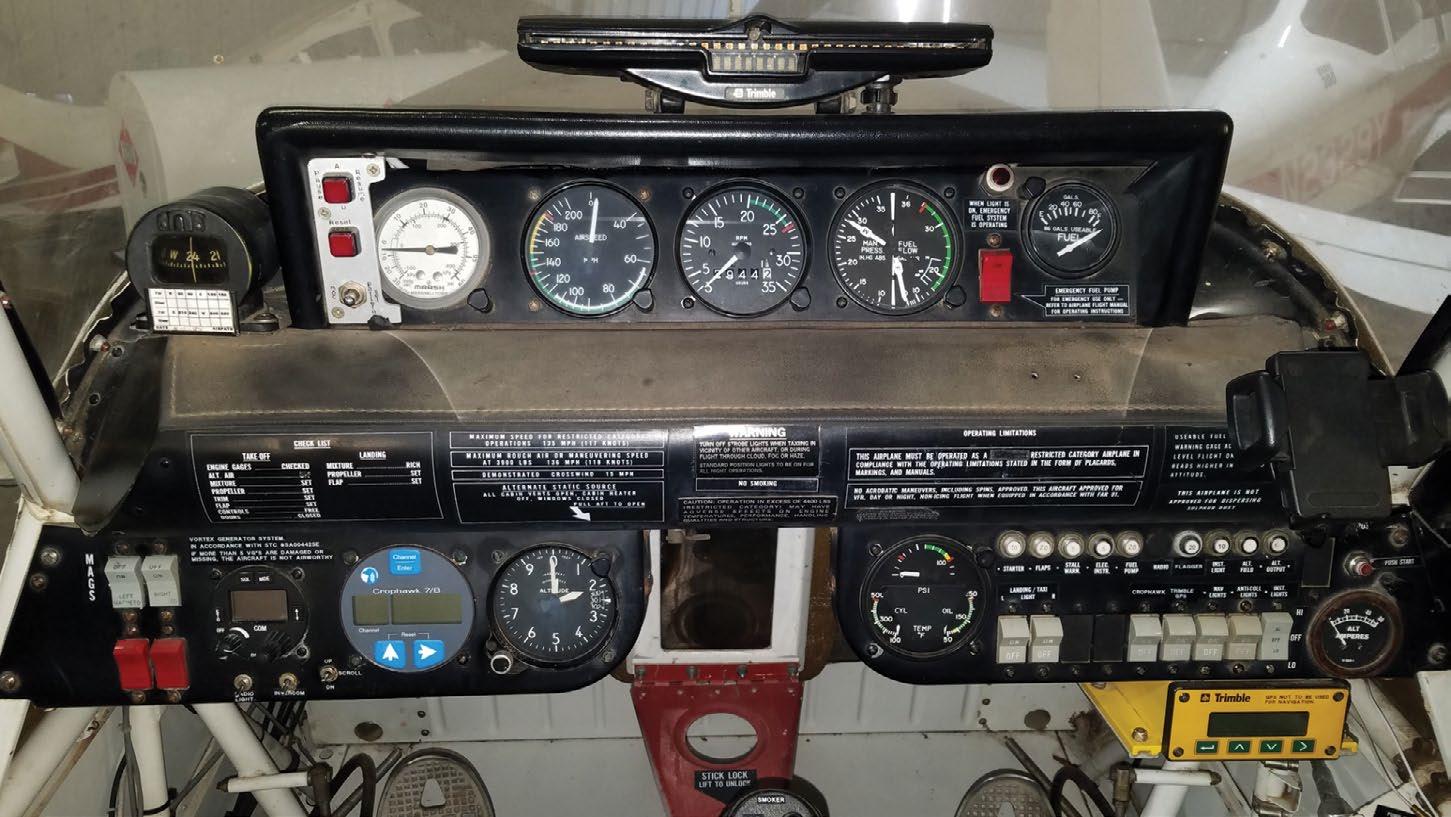

12 PIPERS DECEMBER 2022
The Pawnee’s unique, barebones panel is specially designed for its no-frills mission. Photos courtesy Laura Alleman
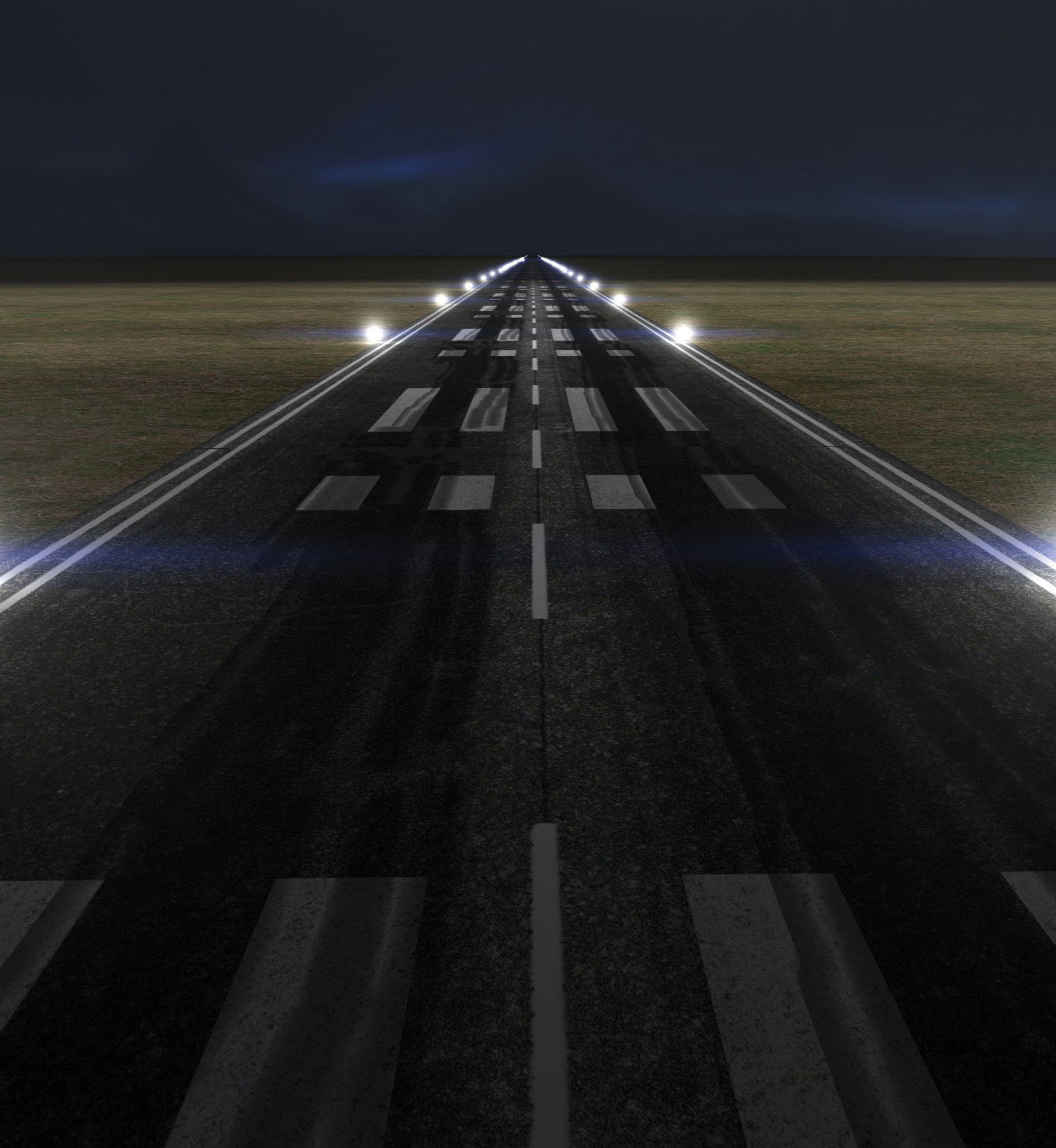

new wires or switches required.
cost!
On: Nav Mode, 2nd On: Strobe Mode
each bulb
energy management. YOUR NAVSTROBE SEXTANT KIT DETAILS ARE AVAILABLE AT www.AircraftSpruce.com FLIGHT SAFETY... SEE AND BE SEEN INTRODUCING THE WORLD’S FIRST USER-INSTALLED STROBE LIGHTS FAA/TCCA TSO-C30C COMPLIANT (FOR CERTIFIED AIRCRAFT) NavStrobe Sextant Available at Aircraft (P/N (US
• SIMPLE PLUG-N-FLY INSTALLATION Use existing Nav switch. No
• COST EFFECTIVE The typical strobe light installation system costs typically $1,200.00. The NavStrobe lighting system is one-third the
• SAVES ENERGY Our uses less than 20% energy of existing incandescent systems, using 1 amp vs. 8 amps. • CLEARLY VISIBLE Technically the light output is similar to a normal system, but with the LEDs and clear lenses, it is perceived to be THREE TIMES more visible. • LONGER LASTING NavStrobe lighting system has a MTBF of 5,000 hrs, while the typical incandescent is about 100 hrs. • SIMPLE OPERATION 1st
• ADVANCED TECHNOLOGY A micro circuit in the base of
increases both functionality and
A SPRAY PILOT’S THOUGHTS ON THE PAWNEE BRAVE
By Randy Yost
Randy Yost has been a spray pilot for more than 30 years. Throughout his career, he has always favored the Pawnee Brave. “I started crop spraying in 1992, and I was hooked on the Brave from the beginning. A friend of mine had a Pawnee Brave, and I really liked its performance. So within two years after I started spraying, I bought my 400 Brave in Spokane, Washington, and flew it back over the mountains to South Dakota. Along the way, I’ve also owned a Terra Brave and 300 Brave.”
Randy appreciates the Brave’s superb flight characteristics. “It’s a very docile airplane to fly,” he said. “It doesn’t have any bad aero dynamic qualities. It’s an easy plane to take off and land, and when trimmed right, it basically flies itself. It makes spraying fun!


“It’s also a simple, low-cost plane to maintain. The only drawback is that it has an airworthiness directive that requires that after so many hours, the wing spars and center carry through have to be replaced. Fortunately, my brother and I are both A&P mechanics (my brother is an A&P/IA), so we were able to do this on our own.
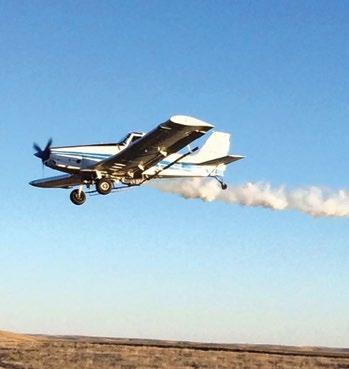
“For the first 15 years of my spray business, I sprayed on my own. It was a good moneymaker and a family operation, with my wife, daughters, and son all doing their part to keep the airplane in the air. Over time, farmers required more acres to be sprayed and be gan putting on more chemicals and fungicides, requiring more trips to the same fields. Eventually, I couldn’t cover the acres by myself anymore, so my brother started helping me spray. Then it wasn’t long before my two nephews were also helping. They also flew 300 and 400 Braves. That increased the amount of maintenance, but we kept parts on hand. Since the parts were interchangeable, the planes were never down for long.”
Randy’s business kept growing to meet increasing demand for spraying. Farmers kept expanding their fields and using bigger equipment, so they needed spraying services to cover all those acres. “With the growth rate we were experiencing, I knew eventu ally I would need to go to turbines to keep up with demand, so I purchased a turbine Brave. That Brave was a great plane to make a transition to a turbine because I only needed to get used to the engine and not the airframe.
“We eventually transitioned to Air Tractors, but I kept my 400 Brave,” Randy said. “It still runs great, and is still, by far, the best plane I’ve ever flown. I wish Piper had continued to produce Braves and designed it to carry larger loads. But regardless, I like the Brave so much that even after 30 years of spraying, if I had my choice, I’d still be flying the 400 Brave as my primary spray plane.”
Mexico, Guatemala
I drifted south in the clutch of slight tailwinds, luxuriating in a 120-knot groundspeed. Legendary Vera Cruz gave way to the wide, coastal plain of Tierra Blanca and lush, green jungles of Mexico’s 100-mile-wide isthmus, Isto de Tehuantepec. I climbed slightly to clear the hills guarding the gulf on the Pacific side, sought out the beach, and cruised contentedly toward the Mex ican-Guatemalan border.
The clouds had dissipated as I flew south, leaving the wild coast pristine in the last afternoon sun. Tapachula Airport passed beneath the wings, my signal to begin the long climb to clear the pass into Guatemala City. Two huge volcanoes guard the western approach, reaching 13,000 feet into the Central American skies. Though the pass is 10 miles wide, it often at tracts thunderstorms. Fortunately, the weather was more agree able this leg, and I managed to sneak past the building clouds at sunset and plunk to a landing at Guatemala City just as the day died behind me.
Guatemala City to Guayaquil, Ecuador, proved to be the most problematic leg of the trip, not to mention the longest. It was supposed to be about a 1,450 nm hop, 13 hours of flying in the Pawnee Brave, which virtually guaranteed I’d be arriving in darkness unless I left Guatemala City at oh-dark-thirty. I was looking forward to revisiting the beautiful west coasts of El Sal vador, Nicaragua, and Costa Rica, but the weather enroute was more than a little iffy. As it turned out, the atmospherics in all equatorial Ecuador were down near IFR minimums with rain and fog, so I was treated to two extra days in Guatemala.
Though winter on the equator often remains bad for weeks, I finally saw what I hoped was a narrow weather window, topped the tanks with every ounce of fuel I could pump aboard and headed back out between the volcanoes for points south.
Within two hours I was skipping along 500 feet above the Pa cific, barely off the Nicaraguan coast, watching the rain-soaked clouds ahead alternately dip lower and lift to 2,000 feet or more.
14 PIPERS DECEMBER 2022
A Pawnee Brave spraying sun flowers, which are a significant agricultural crop that most people don’t think much about.
Photos courtesy Laura Alleman







PIPEROWNER.ORG PIPERS 15 • T-Hangars • Electric Bi-Fold Doors • Individual Hangars • Corporate Hangars • Maintenance Hangars • Hangar Homes Phone 1-208-454-1800 • Fax 1-208-454-1801 www.aviationbuildingsystem.com email: sales.rmsteel@gmail.com HANGARS! 52 Years of Manufacturing Excellence Buy Factory Direct ! R & M Steel Co. Call Today ! (800) 677-2370 www.microaero.com Over 700 Models FAA-STC Approved • Improved Controllability • Improved Characteristics • Improved Safety • Lower Lift Off Speed • Lower Stall Speeds • 1 Day Installation • Micro VG Kits $695. to $3950. MICRO VGs Benefits with MICRO VGs include:
Landing in Ecuador

I finally gave up any hope of following the coast to my planned overwater departure at Puntarenas, Costa Rica, and took a di rect heading across the Gulf of Panama toward Ecuador. It was a pure point-and-shoot, but I figured, what the heck, it worked for Lindbergh. I guesstimated the distance at just more than 700 nm to Esmeraldas, and I knew there was only water between me and Ecuador.
The waves below suggested winds were light, though on the nose. As I drifted across the equatorial waters toward Ecuador, I couldn’t help wondering how I’d go about ditching a 4,000-pound rock with everything hanging out to grab the waves.
Sure enough, just more than seven hours after abandoning the Costa Rican beach, I crossed the rainy coast of Ecuador 14 minutes late and a few miles south of Esmeraldas. The rain kept me low for the remainder of the flight, but I was able to sneak into Guayaquil between thunderstorms just after dark.
I spent the next day removing radios and instruments and finally jumped the airline home to Los Angeles nine days after leaving it. A trip planned for four days had required more than twice that time. Still, it was another 30 hours logged, several new lessons learned and an opportunity to fly a new type of airplane. What better way to learn a new model than a 3,000 nm, sevencountry, international ferry flight?
Bill Cox took his first flight in a Piper J-3 Cub in 1953 and has logged some 15,000 hours in 311 different types of aircraft since. He has authored more than 2,200 magazine articles and was the on-camera host of the 1980s TV series “ABC’s Wide World of Flying.” Bill is currently rated Commercial/Multi/Instrument/Seaplane/Glider/ Helicopter. He can be contacted via email at flybillcox@aol.com


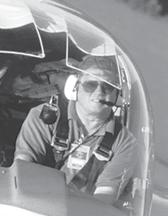
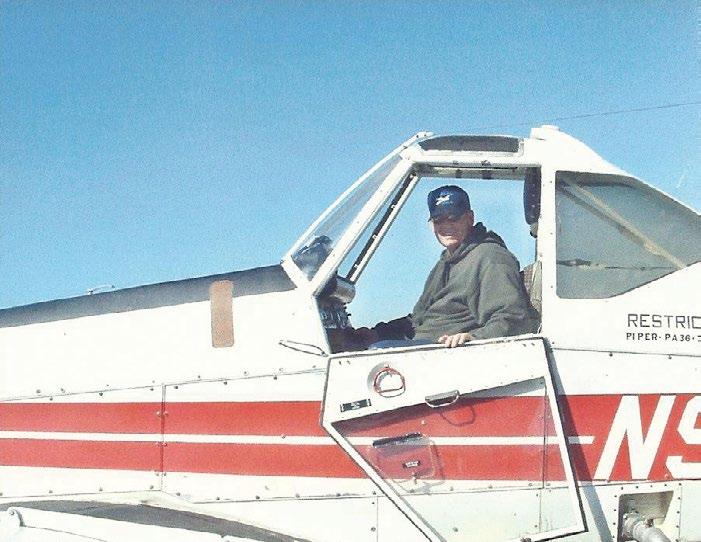
16 PIPERS DECEMBER 2022
Randy Yost in his Brave 400 in 2005. Photos courtesy Laura Alleman
Pawnee Brave pilots have to maintain intense concentration as they need to fly extremely close to the ground to ensure good crop coverage with their spray.
One reason Randy loves the Pawnee Brave 400 is that it is relatively easy and inexpensive to maintain.







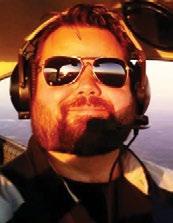


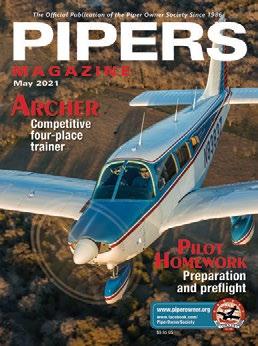
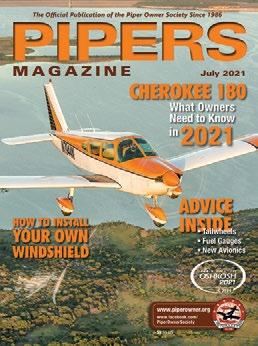


Or call toll free 866-697-4737 and mention offer code: A18PMHA *U.S. rate – Canadian and International memberships are also available Member Benefits include: PIPER Plane peace of mind = OWNER SOCIETY Join Now Join now by visiting piperowner.org/join Enter promo code: A18PMHA or One tech tip easily pays for your membership! 1-YEAR ONLY $59.00* Aviation Director/FAA Master Pilot Scott Sherer, A&P/IA Consultant Erich Rempert, and a host of fellow Piper Owners are standing by and ready to assist. Scott Sherer Erich Rempert Established in 1986 Monthly PIPERS magazine Content to help you maintain and upgrade your plane, to keep you in the air. Technical Support FAA Master Pilot and A&P/IA on staff Member-only Forum Advice from A&P/IAs and other owners Member-only webinars Learn from the best in the industry Digital back issues 10+ years, thousands of articles Weekly E-newsletter Important updates and news Free Part and Product search assistance Free member-only Calendar Mailed with the December issue Fly-Ins, Member Dinner at EAA, and more Tell a Friend!
by Bob Hart - www.AvionixHelp.com
New Pilot Gear
If you’re considering a gift for your favorite pilot, copilot, or maybe just for yourself, anyone who loves to fly always appreciates new flying toys. The best flying-related gifts are the ones that can make flying safer, easier, or simply … more fun ! I always try to keep my antenna up for new prod ucts that fit this category. A few new products broke through the static, so I thought this might be a good time to give ’em a plug. Here are a few new or recent aviation products that will be appreciated by anyone who flies, and they’ll also contrib ute to a safer flight.
Sporty’s Pilot Shop
What you need isn’t a complicated unit with nav options and Bluetooth. What you need is a simple communication device that gets you in contact fast without having to consult the manual. Sporty’s featured this in its previous SP400 and has taken simplic ity to the next level with the PJ2. How? By allowing you to plug your standard headset into the PJ2 directly, with large, easy-to-see display and buttons, and by keeping it simple.

PJ2
Handheld COM Radio — $229 sportys.com
While most of what I plan to talk about are fresh ideas from other manufacturers, Sporty’s PJ2 was introduced in 2019. My publisher likes to call me an “avionics guru,” and maybe that’s true because my advice is often driven by my philoso phies, one of which is that every pilot, VFR or IFR, should have a handheld communication device in their flight bag.
The last time I did an article reviewing the portable comm, nav/comm, and GPS market was in 2018, and Sporty’s had not yet introduced the PJ2. You can buy a portable comm; portable nav/comm with comm, VOR, and ILS; and a por table comm with built-in GPS. The role the portable most often plays is to spend time in the flight bag until needed, and while that might be to listen to the tower at an airshow, it’s usually because your panel-mounted comm stopped do ing its job, and you need to communicate your situation.
The other feature that might sound like a step back is that the PJ2 uses simple, drugstore alkaline batteries rather than the latest technology in rechargeables. Why? Most rechargeable batteries don’t hold their charge for a long time. When you reach for your portable comm device in a situation where you need to depend on it, it may not be there! So, trust your “guru.” Sporty’s PJ2 is a perfect gift for any pilot and the right backup comm device when you need one. Plus, it’s $100 less than the previous model!

18 PIPERS DECEMBER 2022
ResQLink View Model PLB 425 — $390 acrartex.com
Traditional ELTs (Emergency Locator Transmit ter) — even the new 406 MHz satellite-based units — are coming under a lot of scrutiny today because a large percentage fail to work when needed. This problem, combined with thousands of false transmissions, has pilots considering an alternative. For many, the solution is to carry a personal locator beacon (PLB) to augment their tail-mounted ELT.
The PLB remains in your flight bag, and you activate it when needed. The PLB is registered with search and rescue, so they know who you are and where you are. ACR is a well-known company in the ELT/ PLB market, and its Model 425 does the job without the cost of a subscription required by some other products. My philosophy on this? Many of my clients still have the old 121.5/243 MHz ELTs. The best 406 value is the Artex Model 345 at $900, plus instal lation (about $2,200 installed). Unlike avi onics shops that often ignore your budget, I recognize my clients’ budget goals. If a client flies in flat terrain, and the ELT is a budget buster, I recommend simply augmenting their exist ing ELT by adding a PLB. At some point, the 121.5 unit will be obsolete (battery), so they can deal with it then.
The ACR ResQLink features:
• No subscription required
• GPS and Galileo GNSS
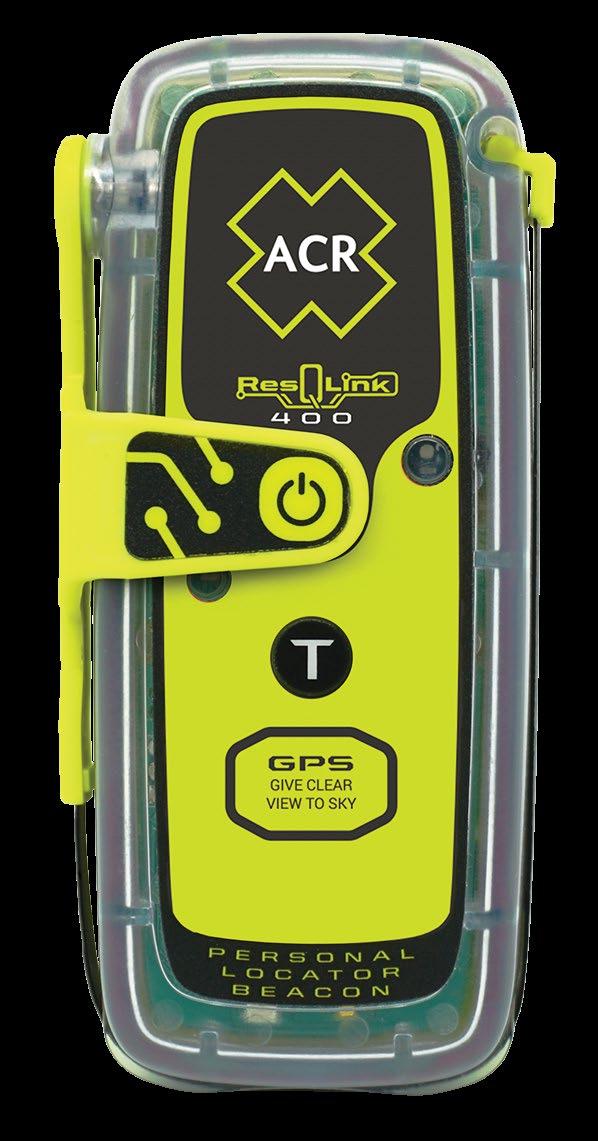
• Built-in buoyancy
• Strobe and infrared strobe
• Global coverage
• MEOSAR compatible
• Small and lightweight
• 5-year battery life
• 28-hour operational life

• Multifunction clip system included
If your pilot doesn’t have a PLB, it would be a great holiday gift.
Garmin
D2
Air X10 Aviator Smartwatch — $550 garmin.com


I have a little James Bond in me, and I bet the pilot in your life does too. The beginning of every Bond film includes his introduction to his latest high-tech watch (courtesy of “Q”), guaranteed to save his life in a pinch. Garmin thinks the New D2 Air X10 Aviator Smartwatch can do the same for you. Simply stated, the Garmin D2 gives you tools on your wrist that can help with preflight, in-flight and postflight, plus health and fitness features and the convenience of making calls from your wrist when paired with your compatible cellphone.
More specifically, the D2, with an international aviation database, allows you to fly direct via the internal GPS and even offers an HSI-like display that shows if you’re left or right of course. Airport data, including runway lengths and frequencies, are there as you approach your destination, and the internal barometric altimeter tells you when you have reached your desired altitude and when it’s time to add sup plemental oxygen. The Pulse OX feature monitors your oxy gen level, while the D2 monitors your heart and respiration rate. If that’s not enough, it reminds you of fuel tank changes, logs your flights, and keeps excellent time, UTC, and in mul tiple time zones.
A large, 18-carat gold pilot’s watch like mine may impress other pilots, but your favorite pilot or copilot will be im pressed with the tools on their wrist that are relevant to a safe flight. This is a great gift. Frankly, I wouldn’t buy an aviator’s watch for myself, but I would appreciate one as a gift (and maybe an Aston Martin!).
PIPEROWNER.ORG PIPERS 19 ACR
ForeFlight — New Sentry Plus Portable

ADS-B and More — $799
sportys.com
ForeFlight remains the most popular aviation software in gen eral aviation aircraft cockpits, in my opinion. It’s constantly up grading its products. You may not have noticed, but ForeFlight originally partnered with Appareo and its popular Stratus ADS-B re ceivers. A few years ago, I noticed a change starting with the original Sentry ADS-B unit. The compact and highly affordable Sentry Mini followed and, in the last few months, ForeFlight has been marketing the New Sentry Plus. The difference is simple. The Sentrys, including the Sentry Plus, are designed by uAvionix especially for ForeFlight. While the Gar min GTX 345 and L3 Lynx “all in one” units are dominating the True IFR panel, the ADS-B portable and smart tablet is here to stay for the pilot flying a legacy aircraft without the budget for big-screen EFIS. The Sentry Plus takes the portable ADS-B to the next level. The Plus in Sentry includes:
• Dual-band, subscription-free ADS-B WX and traffic
• G-meter with digital display
• Built-in “highly accurate” WAAS GPS
• Built-in carbon monoxide detector
• New 18+ hour battery
• Integrated flight data recorder
• Built-in AHRS for backup attitude
While the Android tablet from Google has made a significant impact, ForeFlight has chosen to stick with the Apple iOS op erating system, and I think I know why — quality. You can find cheap Android tablets but there are no cheap Apple products.
A cheap tablet with limited memory and slower processor can make your aviation software look bad. There is little risk of that with an iPad. Note that ForeFlight has chosen to let Sporty’s Pilot Shop handle all sales of the Sentry products, so that’s where you would need to go to purchase the Sentry Plus in the U.S. Fore Flight has two international dealers if you’re outside the U.S.
Lightspeed Aviation
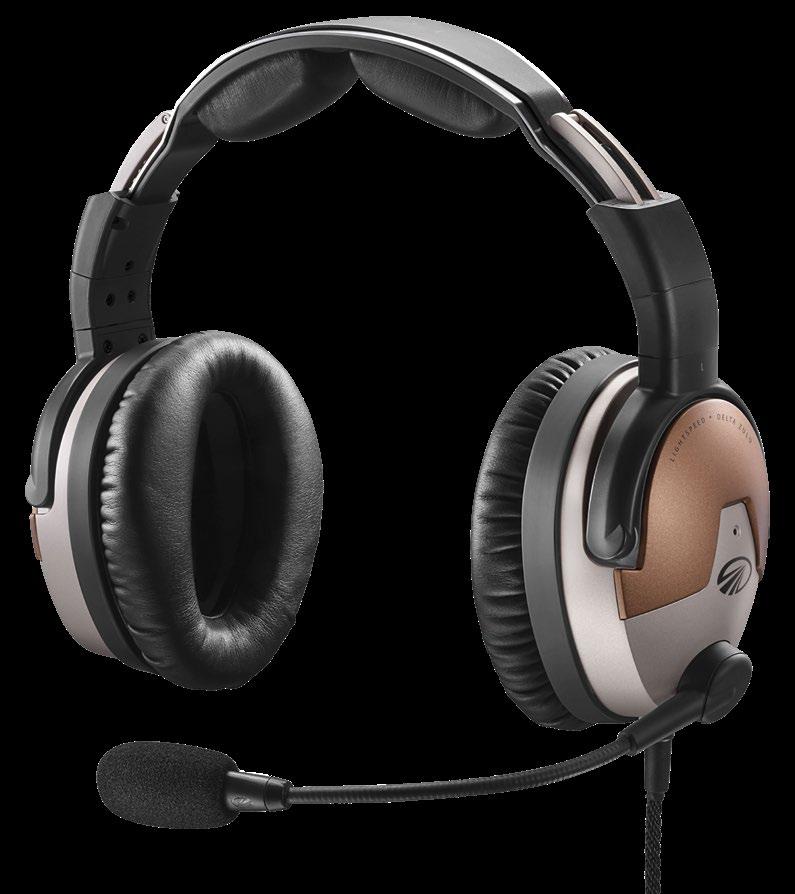
Delta Zula ANR Headset — $1,099
lightspeedaviation.com
It is frequently said that James Brown was the hardest work ing man in show business. The hardest working guy in aviation headsets is Allan Schrader, president, founder, and chief engineer at Lightspeed Aviation. Lightspeed entered the headset market in 1996 (and took on Bose) with its K series headset that made this statement, “Headsets can also be comfortable!” Twenty-six years later, you will still find Allan at the big aviation shows like Osh kosh and Sun ’n Fun in one of his dealer’s booths demonstrating his products, which includes what I think is the new leader in headset design: The new Delta Zula ANR. Check out these features:
• Built-in carbon monoxide sensor
• HearingEQity for custom sound (adjusts to your personal “hearing profile”)
• Changeable battery packs (use rechargeables or AA batteries)
• A2DP Bluetooth technology for phone or music with alerts
• Low profile comfort and high-performance fit
• Durable for longevity (stainless steel, magnesium with Kevlar core cables)

• Auto shutoff that saves battery life
• Adaptable to standard GA plugs, Lemo (Bose) or U-174 for helicopters
• Seven-year warranty
What a great gift for your favorite pilot or copilot. [Ed. Note: This product will be reviewed in the February 2023 issue.]
Conclusion
One more thought from the “avionics guru.” The best gift is something you would want but not something you would likely buy for yourself. These items are just that. They all have the po tential to make flying easier and safer, and let’s go so far as to say that some could actually save your life. Any of these products would be appreciated. Happy shopping.

Thanks for reading!
Until next time … Safe and Happy Flying!
Bob Hart purchased his first airplane in 1971 at age 21. He’s owned five others since. As a Senior Avionics Consultant at Eastern Avionics, Bob has personally sold over $20 million in Avionics. Bob now offers avionics advice through many online forums and through his website: www.AvionixHelp.com and is semi-retired. After living in Colombia, South America, for a few years, he is now back in sunny Florida.
20 PIPERS DECEMBER 2022
Editor’s Note: Bob Hart is a regular participant on the Piper Owner Society’s forums and is available to answer your avionics-related questions. To contact him, visit www.PiperOwner.org, click the Forums tab, and scroll down to the “Avionics” forum. Piper Owner Society membership is required.


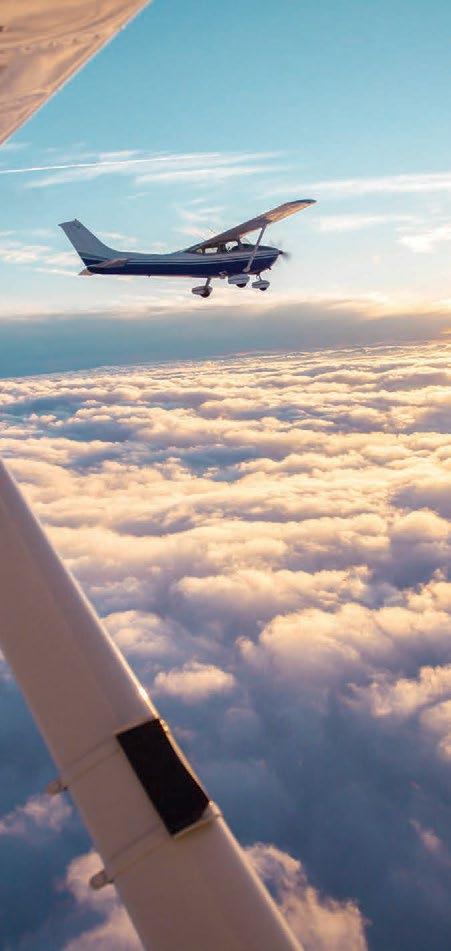






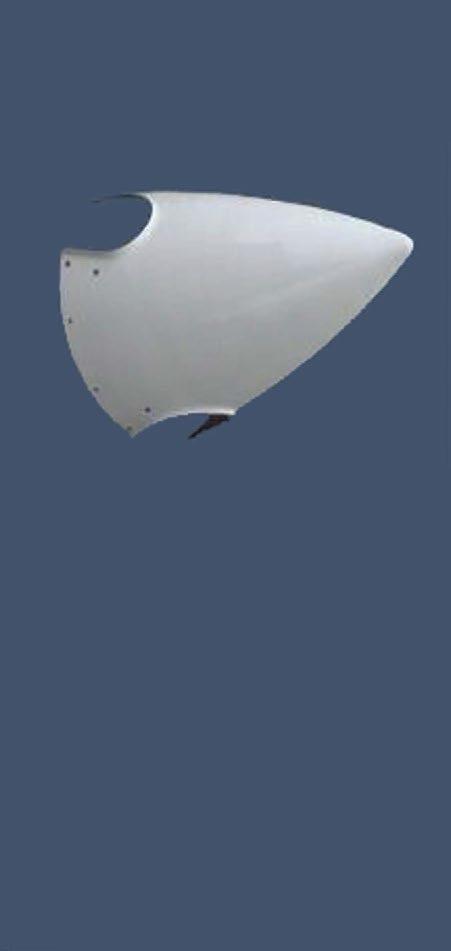
PIPEROWNER.ORG PIPERS 21 FAA Approved Repair Procedure Spinner Cones & Backing Plates We are now FAA approved to repair cracked main landing gear housings for PA-24, PA-30 & PA-39 aircraft. FAA Certified www.Precision-Welding.com 262.642.5003 - 800.537.7494 2083 Hwy L Unit 15, East Troy, WI 53120 FAA# XKKR436L K&K Precision Welding
By Bill Cox
1 2
E F NEVER Run It Dry
Keeping Track of the Time/Speed/Distance Equation Is Only Part of Fuel Management
It was the Christmas holiday, and I was on my way back from the Bahamas to Venice, Florida. Joe Ponte, public re lations director of Piper, had graciously loaned me a new Cherokee Six 300 in conjunction with a pilot report, and I’d elected to take my mom and stepfather on a quick, four-day trek to Freeport and Nassau.
On the trip back, we’d made a stop in Ft. Lauderdale to clear customs, turn in our survival gear, and close our inter national flight plan before relaunching for the short diagonal hop across the state to Venice on the Gulf Coast.

My parents were luxuriating in the back of the big Six as we cruised 6,500 feet above the swamp when the engine sudden ly quit cold. The immediate silence got everyone’s attention, especially mine. I was the number one son, and mom trusted me implicitly in any airplane. I didn’t want to dispel that trust by doing something stupid, though it seemed I already had.
Of course, I’d let one of the Cherokee Six’s four tanks run dry, and the engine had shut down in a heartbeat, without a telltale tick of the fuel flow or any other forewarning. As calmly as I could, I turned on the fuel pump, then, feigning a casual motion, reached down and switched to a tank with some fuel in it. I turned to mom and Bob in the back seat, summoned what I hoped would be a reassuring smile and said, “Sorry about that. It’s no big problem. I just ran a tank dry. The engine will pick up in a few seconds.”
I turned back forward, expecting power to return at any moment. I waited and waited. Nothing happened. We were gliding down toward Lake Okeechobee, and I was beginning
22 PIPERS DECEMBER 2022
LESSONS FROM LOGBOOK
to wonder if we were about to discover firsthand that the lake was indeed only five feet deep as I’d read.
Finally, after perhaps 20 seconds that seemed more like 20 minutes, I heard some expectant coughs from the Lycoming before it came slowly back online. We continued to Venice and mom’s only comment after we landed was a calm, “Does that happen often?”
Fortunately, if you’re smart enough to plan ahead, it need never happen — even once. I obviously wasn’t and didn’t, so it did.
Fuel Exhaustion vs. Fuel Mismanagement

Fuel exhaustion is exactly what it sounds like — running the tanks dry. Conversely, fuel mismanagement relates to landing with fuel still on board but that fuel is inaccessible be cause of a system problem, because the pilot didn’t know he had it available, or because he simply forgot to change tanks.
Fuel management isn’t really that tough these days, considering that totalizers keep al most perfect track of fuel burned and remain ing. Even modern aircraft fuel gauges are more reliable than they used to be. In fact, managing fuel use was never that difficult to begin with, provided you knew how much you had on board at start-up, how much you were burning, and when you departed. Assuming there were no leaks, the answer was a simple problem in elementary math.
The difficulties arise when you don’t know all three of the items above. Trouble is, many pilots are convinced they do know how much fuel is in the tanks when, in fact, they have only a vague idea.
Fuel Capacity
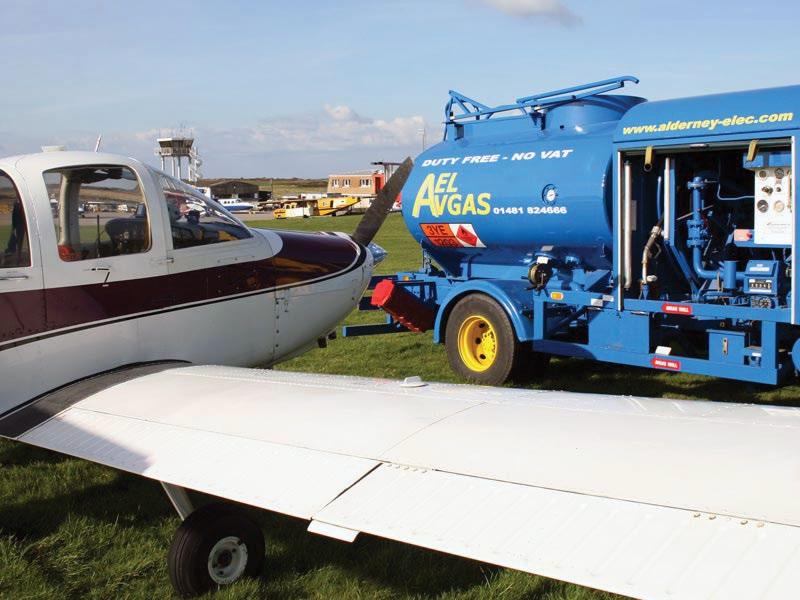
First, let’s consider fuel capacity. For lack of a better exam ple, I’ll use my airplane’s fuel system. According to the book, I can carry 64 gallons in my airplane…or can I? I bought my latest bird in 1987 and knew it had never been wrecked (ac cording to the logbooks), so it was reasonable to assume the tanks were not deformed and still in the original shape. For tunately, I had the airplane’s tanks resealed a few years ago, so I had the perfect opportunity to determine true capacity. Every ounce of fuel had to be drained in order to reseal the tanks, and that meant I was starting from true empty.
Accordingly, I pushed the airplane out to a level ramp, with no apparent list left or right. It was mid-morning, and the temperature was about 60 degrees F, pretty close to standard, so fuel density wasn’t a concern. (Some long-distance flyers, in search of maximum range, have their fuel supercooled and pumped aboard at the last possible minute. They then climb quickly to high altitude and burn the top off each tank before the avgas can expand and overflow.)
When the fuel truck arrived, I asked the fueler to pump the 100LL slowly and alternate tanks every 10 gallons so there’d be less chance of an air bubble. While he pumped, I shook the wing at the tip to help any air escape. Then, I watched carefully to make certain the level came to the exact bottom of the filler neck.

Another peripheral concern if you have two tanks is to make certain the selector works properly. If you run a tank dry, reach down to switch tanks, and find the selector refuses to move or comes off in your hand, you have a real problem. That’s one reason I always switch before any tank gets below about three gallons, providing me a 15-minute hedge to find someplace to park.
When the fueler was done, the meter suggested I had taken aboard 33.1 gallons in the left tank and 33.4 gallons in the right for a total of 66.5 gallons — 2.5 more than the stated maximum. According to the flight manual, that’s all usable, so I know I can assume that figure for flight planning, but I don’t. I use the standard 64-gallon capacity instead.
Deformed Fuel Tank
A deformed tank can be more common than you might imagine, and any deformation will almost always rob you of fuel capacity. After a friend with a Comanche 260 died of a heart attack many years ago, his widow asked me to main tain his airplane for her, taking it out for a “walk” every two months or so — not such bad duty. She swore she’d never sell it, as it had been her late husband’s beloved toy. Finally, real ity intervened, and she asked me to sell it for her.
PIPEROWNER.ORG PIPERS 23
The second year I had the Comanche relicensed. However, just before I handed the keys to the new buyer, the mechan ic commented there was a significant ding in the left tank, probably from an accident long before my friend bought the airplane. Though I’d never run the Comanche dry, I’d noticed that the left tank always seemed to take less fuel than the right. Lesson learned.
Fueling on level ground was another part of my fuel man agement education. Once, on a ferry flight to South Africa in a Cessna Caravan back in the 1980s, I parked on a slightly slanted ramp in Libreville, Gabon, and fueled the airplane for the next day’s early departure. The following morning when I walked out to the Cessna, there was a huge fuel stain under the down sloping wing. I called the truck back for a top off and discovered I’d overboarded 30 gallons of Jet A onto the ramp. I departed some $200 poorer, but, at least, that much wiser.

Wings Not Level and Trapped Air
There’s a second similar situation that can also result in misfueling. Both struts need to be equally depressed or you could wind up with a fuel imbalance — even on level ground. Aerostars, perhaps because of their long gear and hydraulic struts, are especially prone to asymmetric strut depression.
OK, so you know the airplane is perfectly level when the truck arrives. There’s yet another way to wind up with less fuel than you planned. Some models with high dihedral, the Piper Malibu for one, are prone to trap ping air at the tips. The fuel level will be right up to the lip, but you may wind up with less than the maximum 120-gallon capacity (on the Malibu).
One morning, in preparation for the final leg from Reykjavik down to Louton, UK, I went out to a new Mirage, popped the caps, and shook the wings vigorously to release any trapped air. The level dropped at least an inch on one side and two inches on the other. It required five additional gallons to bring the tanks to max ca pacity — that’s worth about 15 min utes in a Malibu.
Calculating Fuel Burn
Now that you’re reasonably certain you have truly full fuel, you can make some intelligent estimates of burn and endur ance. I’ve had so many experienced pilots suggest deduct ing an automatic 5% from known capacity that I do it all the time. If you normally fly with 80 gallons in full tanks, you might want to consider using 76 gallons as max and do all flight planning based on that number. On my airplane, I as sume I’m starting with 61 rather than 64 gallons.
If your flying machine has a combination engine analyzer/ fuel totalizer such as the JPI EDM-800, that’s the best pos sible protection against a dumb mistake. For those with a reasonable idea of fuel burn but no totalizer, you can make intelligent estimates that will work nearly as well.
My airplane burns about 11 gph at max cruise, and I sub tract that figure as my reserve. That means I have 50 gallons to work with on any trip. As a rule of forefinger, I typically multiply burn at 75% by 1.4 for the first hour to account for climb (that will vary with weight, temperature, final alti tude, turbulence, phase of the moon, and your personal bio rhythms, but it should be close); then, determine what will be left for the enroute portion. In this case, I’ll burn about 16 gallons in the first hour, so I’ll have 34 gallons plus reserve remaining. That’s about 3.1 hours of endurance.
At 150 knots cruise and perhaps 15% less during the first hour, I expect to fly about 127 nm in the first hour and an other 465 nm during the remaining 3.1 hours for a total nowind range of 593 nm (plus the aforementioned one-hour reserve). Also, remember that I’ve built in a deliberate threegallon hedge, at least another 15 minutes of endurance. Add all that to the extra 2.5 gallons in my airplane’s strangely en larged tanks, and there’s more like a “free” 30 minutes of ad ditional reserve.
24 PIPERS DECEMBER 2022
The AOPA Air Safety Foundation reports that fuel exhaustion or mismanagement are all-too-common causes of accidents, generally fourth behind landing accidents, takeoff incidents, and maneuvering flight at low altitude.
Trying to pin down range precisely assumes you know your airplane fairly well, can count on a given true airspeed, and that you’ll be flying in smooth air with minimum turbulence. It also assumes the winds will be calm (almost never the case).





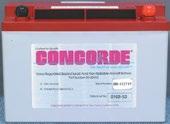







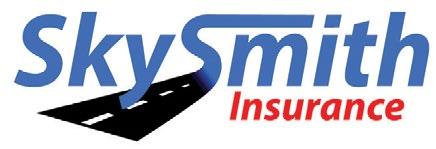






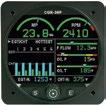

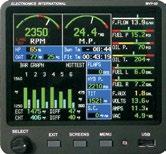

I could increase range slightly by using a reduced power setting, but my airplane seems to gain very little range at lower power, so I stick with at least 70% nearly all the time.



Factoring in Wind
I’ve always used two simple rules to handle the effects of wind. These were taught to me by a highly experienced ferry pilot. Donn Kerby flew a little of everything across the Atlantic to Europe in the halcyon days of the ’70s and ’80s, and tallied 299 trips before he finally retired. (We razzed him a lot about getting that final 300th trip, but he wanted to play golf.)
Donn’s rules were simple: reduce any forecast tailwind by a third and add 25% to any headwind. The most likely consequence of such a policy is that you’ll arrive at your destination a few min utes early and with more fuel than planned. Works for me.
Switching Tanks
Actual fuel management is usually fairly simple on most general aviation airplanes with one fuel tank in each wing and a simple selector that has left, right, and off positions. I’ll generally depart on one tank (usually the left if I’m alone in the airplane), ascend to my chosen altitude, set up the air plane for cruise; then, note the time, switch to the opposite tank for an hour, and alternate as necessary.
Another peripheral concern if you have two tanks is to make certain the selector works properly. If you run a tank dry, reach down to switch tanks, and find the selector refuses to move or comes off in your hand, you have a real problem. That’s one rea son I always switch before any tank gets below about three gal lons, providing me a 15-minute hedge to find someplace to park.
Overcoming Murphy’s Law
After my experience in Florida — and a few others before it — I never run a tank dry. I’m not a complete idiot (some parts are missing), but I’m fairly certain Murphy’s Law will have a tough time catching up with me and all the hedges I’ve built into my fuel planning.
I can lose some fuel to overboarding or an air bubble, the wind can become stronger than forecast, consumption can increase, I can suffer rerouting by ATC, the airplane can pick up some ice and slow my speed, or I can be forced to deviate around weather, but I can still make it to my destination or a reasonable alternate.


At least, that’s what I keep telling myself. So far, so good.
Bill Cox took his first flight in a Piper J-3 Cub in 1953 and has logged some 15,000 hours in 311 different types of aircraft since. He has authored more than 2,200 magazine articles and was the on-camera host of the 1980s TV series “ ABC’s Wide World of Flying.” Bill is currently rated Commercial/Multi/Instrument/Seaplane/Glider/ Helicopter. He can be contacted via email at flybillcox@aol.com
PIPEROWNER.ORG PIPERS 25 ORDERS: (800) 447-3408 • No Sales Tax on Oregon Orders! • 30 Years Experience • Same Day Shipping • Knowledgable Sale Staff Free Ground Shipping, that’s “really” free, on most orders over $350. Engine Monitoring & Flight Instruments BOSE A20 In Stock Avionics Solutions from Garmin, uAvionix & more Mail-Order Available The Parts to Start Everytime In Stock Aircraft, Drones, Collector Cars, Boats, Motorcycles, etc. Contact Scott “Sky” Smith www.skysmith.com phone: 515-289-1439 ins@skysmith.com
Eliminate Exterior Screw Corrosion
 By Scott Sherer Aviation Director
By Scott Sherer Aviation Director
Back in 2017, I wrote an article about finding severe cor rosion in my Seneca. By severe, I mean that I came very close to catastrophic flight control failure as a direct re sult of that corrosion. I had owned my Twin eight or nine years at the time, as I recall, and it was missed on that many annual inspections. It was about that time that I moved to a new air port and new shop. My new mechanic found it on the first annual inspection. My new shop repaired it for about $8,000 or so. The quality of the repair was perfect, and I was pleased. Since then, I’m always looking for corrosion, and with the Seneca gone and an Arrow in my hangar, I’m still looking for it. Recently, I found a small amount of corrosion and I’m going to take care of it.
Since I haven’t dealt with corrosion since 2017, I was, if you’ll pardon the expression, a bit rusty on the topic. I went to get the bible on corrosion from the FAA website, and all owners should read it. You can download it free from FAA.gov. Search for Advisory Circular 43-4A, titled “Corrosion Control for Aircraft.” Written in 1991, this is the seminal document on the subject.
If you’re new to this subject, this document is so scary that you’ll want to run out to your plane and drape your body over the wings. We pilots are tough, though, so spend an hour and read this document. I’m going to cover one section in the doc ument entitled, “Forms of Corrosion.” I won’t try to teach you about corrosion because I could never do as good a job as this circular. However, I’ll give you a taste of what it includes and tell you a little about each form of corrosion that attacks our flying machines.
Forms of Corrosion
A. Uniform Etch Corrosion. Uniform etch corrosion results from a direct chemical attack on a metal surface and in volves only the metal surface.
B. Pitting Corrosion. The most common effect of corrosion on aluminum and magnesium alloys is called pitting.
C. Galvanic Corrosion. Galvanic corrosion occurs when two dissimilar metals make electrical contact in the presence of an electrolyte.
D. Concentration Cell Corrosion. Concentration cell corro sion is corrosion of metals in a metal-to-metal joint, cor rosion at the edge of a joint even though joined metals are identical, or corrosion of a spot on the metal surface cov ered by a foreign material.
E. Intergranular Corrosion. Intergranular corrosion is an at tack along the grain boundaries of a material.
F. Exfoliation Corrosion. Exfoliation corrosion is an ad vanced form of intergranular corrosion in which the sur face grains of a metal are lifted by the force of expanding corrosion products occurring at the grain boundaries just below the surface.
G. Filiform Corrosion. Filiform corrosion is a special form of oxygen concentration cell corrosion or crevice corrosion that occurs on metal surfaces having an organic coating system.
If this isn’t enough to keep you up at night worrying about your airplane, take heart that you can get control of this relatively eas ily. First, read the circular, and study the photos and diagrams. If you have questions, log on to our online forum and ask them.
26 PIPERS DECEMBER 2022
Screw container from Ace Hardware. Less than $20.


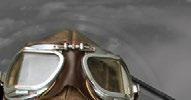







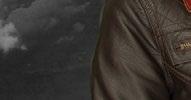
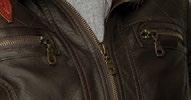
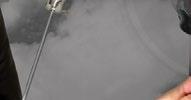


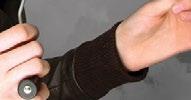
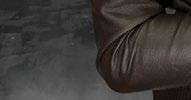

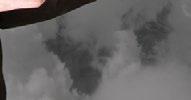






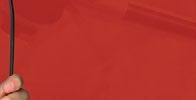






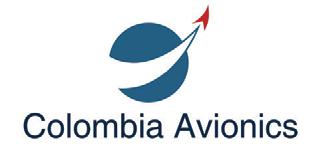






PIPEROWNER.ORG PIPERS 27 BOB HART www.AvionixHelp.com Avionics Advice to Legacy Aircraft Owners that Bob@AvionixHelp.com Office: (941) 258-8644 WILL SAVE YOU MONEY! The Flights & Times of Bill Cox MY SKY THE FLIGHTS & TIMES OF BILL COX BILL COX BILL COX 9 780578 760100 52495>ISBN 978-0-578-76010-0 the airplane at Djibouti, having to deviate to the hope we don’t have to do government in Somalia and clearance. Even if we had rebel factions might take good as it gets in this part of offering broken to overcast dodge around the cumulus cumulonimbus buildups as we par gradually being pushed east are very near the Somali but have no choice. A com terrain makes it inadvisable advise Addis Ababa of the respond with a totally dis luck.’ Unlike the travelogues there are no rivers and few seen any animals yet, prob of water. know there are resources in this part of the better not have a problem. As if of Africa.” Decades of flying the world are cap tured in this new book from JP Media LLC. Dozens of Bill Cox’s most-inter esting travels and travails are cap tured and the beautifully scripted way in which only Bill can write. Visit piperowner.org/bill-cox-book today and you can: • Listen to an interview with author Bill Cox • Read two chapters • Order the book $2495 Only Great Gift Idea!
We have many very knowledgeable members with experience in this area, and some even hold PhDs in related subjects. Our as sociation A&P/IA, Erich Rempert, is also an expert in this area.
So where did I find corrosion on my plane? I found galvanic corrosion on my ailerons. Galvanic corrosion occurs when two dissimilar metals make electrical contact in the presence of an electrolyte. If you look at the exterior of your airplane, you’ll see perhaps as many as hundreds of screws. Check where these steel screws meet the aluminum skin around them. If the paint is stained brown, then you have corrosion. Not to sound overly dramatic, but if the screws have never been replaced, and your plane is 40 or 50 years old, you could wind up with unrepairable corrosion all over the aircraft.
The Solution
So what’s the solution? This is easy and inexpensive. You don’t need a mechanic or a big credit limit on your credit card. And you don’t have to be AOG, either. Visit the Aircraft Spruce web site (aircraftspruce.com) and search on “screw kits.” You’ll find a pre-packaged complete screw replacement kit for your aircraft model. The kit for an Aerostar is about $127; for a PA-28, it’s about $62. An Apache is $86 and a Comanche is $34.
After purchasing the screw kit, make a trip to your local hard ware store and for a few dollars get a plastic case. Fill the case and you’re ready to go. While you’re at the hardware store, you could spend another $20 or so and get a new screwdriver for each size screw in your box. Buy the highest quality screwdriv ers you can. You want the new screws to go in undamaged and last another 40 years. Also pick up a Scotch-Brite pad.

Replacing the Screws
Back at the hangar, start by removing one screw, cleaning the area under the old screw with the Scotch-Brite pad, water, and a paper towel. Make sure no rust or corrosion remains. After the hole is dry, replace with a new screw of the same kind. Okay, one done, with a few hundred to go. Here’s the good news: you can do this project yourself a little at a time and not be grounded at all. Just replace a dozen or so screws and go flying. Next time you’re at the airport, replace another dozen or so and go flying. Wait, there’s more! You’re doing fine, but your screw kit may not be complete. This screw kit doesn’t contain fuel tank screws. The screws used on many fuel tanks are structural and are designed to a much higher standard than the screws in the screw kit. They need to be replaced too. You will need to search the “screw kit” section of the Aircraft Spruce web site for fuel tank screws. They cost from $20 to $85 for a complete kit.
So far this article has prob ably been useful to you but it re ally doesn’t address where I found corrosion on my Arrow. It already has the stainless steel screw kits installed. However, I found galvanic corrosion on the screws attaching my ailerons to their hinges. There are three sets of five screws on each aile ron (30 total screws). These are spe cial, structural screws and will need

Above: Screw sizer I purchased at Home Depot for about $15. Inset: Screw-measuring gauge from Aircraft Spruce, $10.50.
to be ordered from Aircraft Spruce, the old screws removed, the paint cleaned and new screws installed. I won’t tell you the screw number because your plane might be different.

I removed one of these screws, cleaned the head with some Scotch-Brite so I could read the lettering on it and ordered 30. I confirmed what kind of screws these were using the screw sizer and gauge tools shown to make sure that I got the correct screws. Being careful is a good thing!
There are no original exterior screws on my plane. They’ve all been replaced with stainless steel, and they should last an other 40 years. My plane is corrosion-free, and I can sleep at night. And the cost? It might cost less than a hundred dollars but certainly less than two hundred. That’s almost nothing in airplane dollars.
MORE ON CORROSION
• “Corrosion: Avoiding Costly and Deadly Mistakes,” by Scott Sherer, September 2018 issue, piperowner.org/archive
• “Keep Corrosion from Killing Your Aircraft,” by Floyd Allen, September 2012 issue, piperowner.org/archive
RESOURCES

Aircraft Spruce (aircraftspruce.com)
FAA circular (faa.gov) Search for AC 43-4A
Ace Hardware (acehardware.com)
Home Depot (homedepot.com)
Left: Screw kit from Aircraft Spruce, $30 and up, aircraft model specific.
28 PIPERS DECEMBER 2022

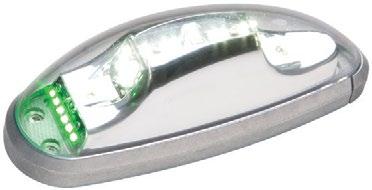






PIPEROWNER.ORG PIPERS 29 Surplus Piper Parts 26,000 Square Feet of warehouse space. Full of New Surplus Piper parts Cubs to Cherokees to Navajos and Cheyennes. Give us a try, we might just have it. Mention this ad and get 50% off your Piper Surplus Wilco holds the Concorde Battery STC for the Piper Singles, Twins, and Cheyennes and are a Distributor for Lamar, LP Aero, PM Research, Rapco and Whelen (stocking all of their new LED lines) We keep you safe and comfortableWilco Aero-Mach Aero-Mach Wilco, LLC • 800-767-7593 Sales@wilco.to • Wilcoaircraftparts.com 800-433-0814 U.S. & Canada Tel. 330-698-0280 FAX. 330-698-3164 www.preferredairparts.com Cessna, Citation, Piper, Eurocopter, Bell, Sikorsky, Socata, Mooney, and many others! New Surplus Aircraft Parts in Stock! The world’s leading supplier of New Surplus and Used aircraft parts for nearly anything that flies! AAI’s “Advantage Service Plan” Means “Service You Can Depend On” • 24/7 Service Assistance • Easy Payment Plans Available • Best Coverage at Best Price • Representing all Major Companies ➢ Over 30 Years of Aviation Insurance Experience ➢ Private Aircraft, Corporate Aircraft, Helicopters, FBO’s, Charter Operators, AG Operators, Airports, Flight Schools and more! Discounts for AOPA Members • EAA Approved Program Toll Free (866) 833-5224 www.IFlyAAI.com • E-mail: jzimmer@IFlyAAI.com
Legacy to Glass
Cherokee Owner Assists With Panel Upgrade
By Tom Weaver Member and CFI
Why would anyone in their right mind spend more on avionics upgrades than what their airplane is worth? That’s crazy, right? Maybe, but not so fast. I have a 1972 Cherokee 180 that’s in great shape with around 4,000 hours TTAF and a high-time but strong engine. It had an outdated legacy panel that’s had many modifications over the years, in cluding an Apollo LORAN that came and went. I had consid ered installing a couple of EFIS-type instruments and a used 15-year-old navigator but, in the end, because the panel would be torn apart anyway, the cost wasn’t much more for a total glass upgrade. So that’s what I did.
Going All Glass
Considering the bang for the buck, I really liked the Dynon Skyview system because of the features and the ability to buy outside an avionics shop. Dynon’s network of dealers is rela tively small, so in order to sell units, they’ll sell to your favorite avionics guy, and you can do a lot of the work yourself, saving a lot of cash. However, it’s a VFR system, unless an IFR navigator is coupled with it. It does play nice with several systems, so that’s not a problem necessarily.
Dynon’s autopilot is the big hang-up with the FAA in certify ing my Piper, but there are several other approved autopilots that can be installed. I was fortunate to have Mike and Tom,

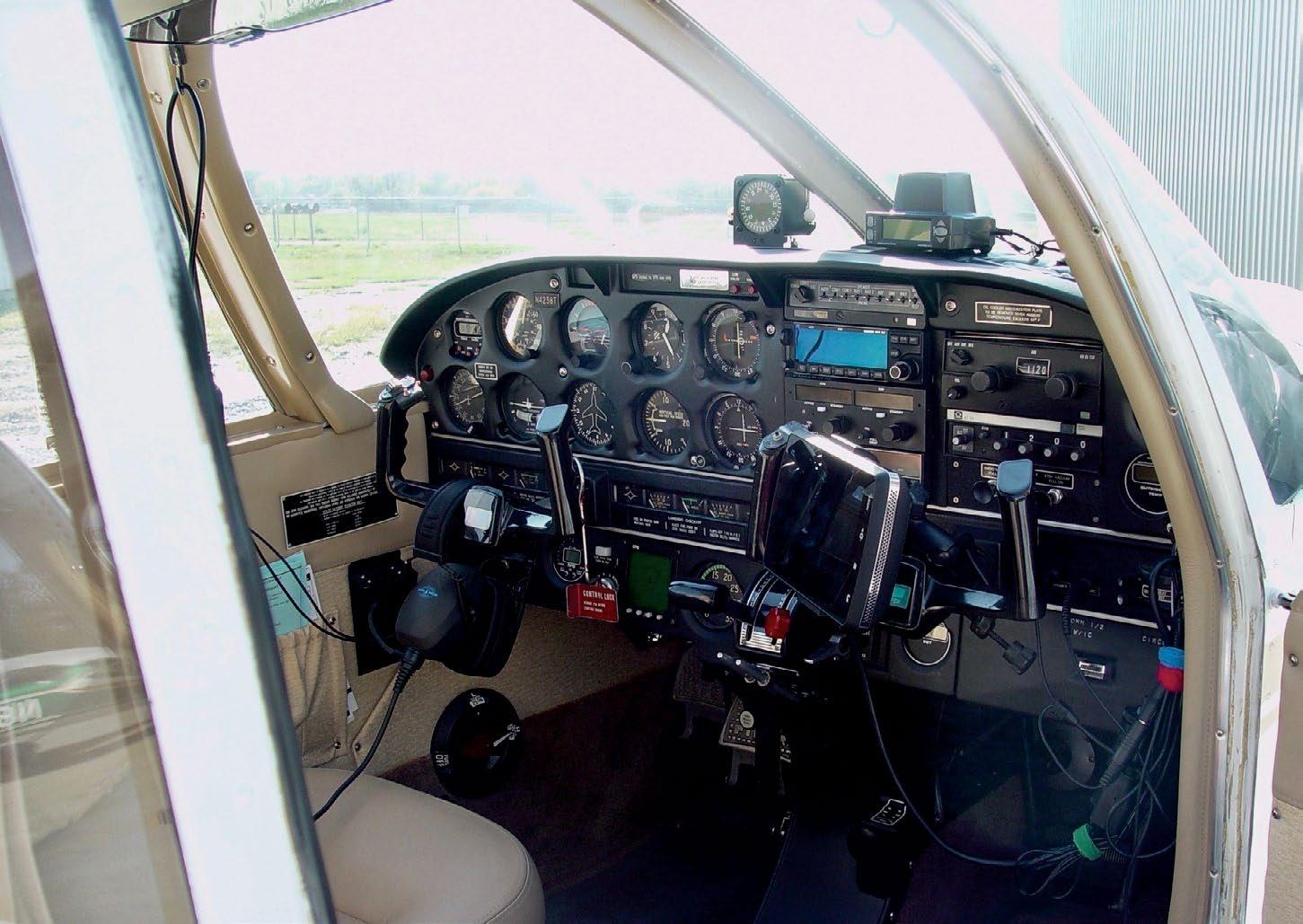
30 PIPERS DECEMBER 2022
both A&P/IA mechanics, on my team. Mike is also an avi onics technician. They were both willing to work in the comfort of my heated hangar and allow me to do a lot of the grunt work to save the aforementioned cash. With out that, I couldn’t and wouldn’t have done this upgrade. The plane’s annual was due January 2020, the same month ADS-B Out was required to be onboard. Work began in January, with my plane still lacking the ADS-B Out at that point. I decided on a dual 10" left and a 7" right Dynon PFD/ND with ADS-B In and Out to take advantage of traf fic and weather input. A Dynon D10A EFIS functions as a backup, and all the Dynons have a backup power source. I also selected an Avidyne IFD540 navigator (WAAS) and a PS Engineering PMA450B audio panel. Other items, such as the Stormscope, were moved to take advantage of the now open panel space.
I chose a Trio autopilot because of its features and avail ability during the pandemic. The STC for the Trio wasn’t yet approved for the Hershey bar winged Pipers, but I was told it was only a few weeks from being approved. True to their
Previous Page: Tom’s old panel with a Portable Collision Avoidance System (PCAS) velcroed to the glareshield. Photos courtesy of Tom Weaver.
Below: The old panel lies flat in front of an early panel prototype that’s standing upright. The prototype has the new instruments placed in front to evaluate their fit and placement. Thomas had several more prototypes made before he settled on the winner — Prototype No. 6.
Right: The avionics are laid out behind the final panel to make certain they will fit. Packing blankets protect the wing during the installation.
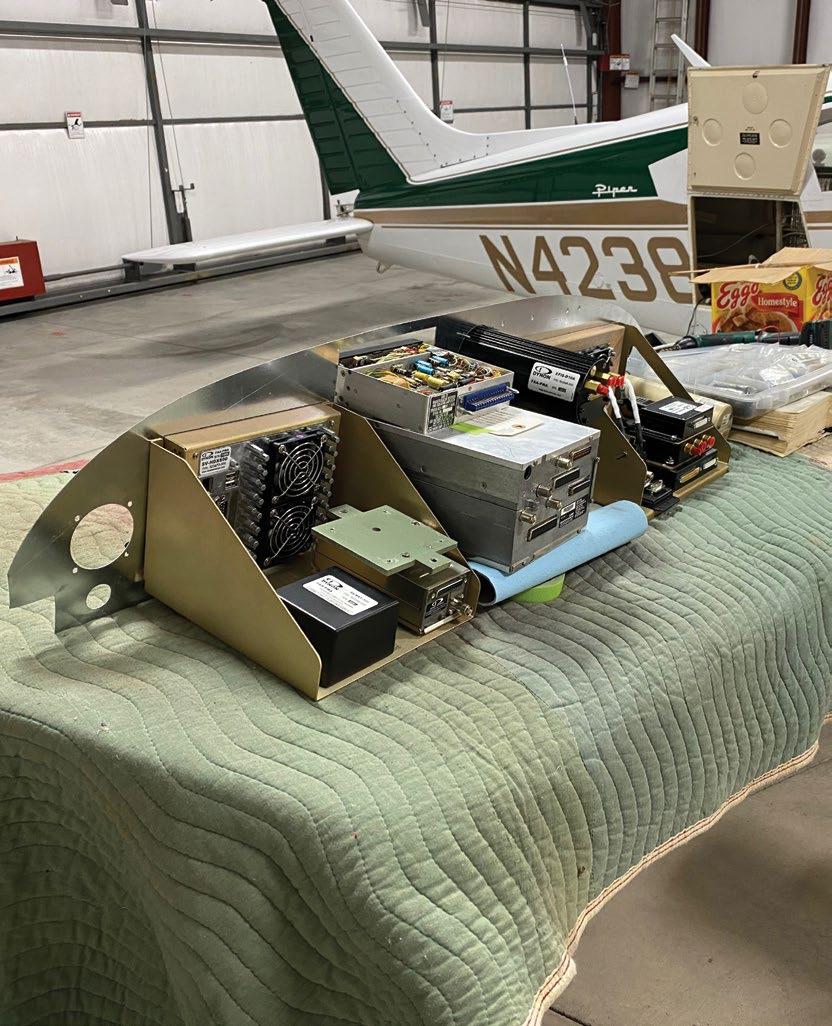

word, within a few weeks, we had the hardware and the legal pa perwork. In fact, my airplane is the #001 STC for this certified autopilot for Hershey bar winged Pipers.
I also learned that most digital autopilots won’t fly a coupled ILS approach because an ILS/LOC output is an analog signal that a digital autopilot can’t process. They’re designed to follow GPSS digital information only, such as an LNAV/VNAV approach or, if WAAS enabled, an LPV approach. One interesting thing to consider is that most LPV approaches have minimums as low or sometimes lower than their ILS counterparts, and most ILSs have an LPV overlay approach. A case in point is the LPV approach for 30L at KCPS. It’s actually a foot lower than the ILS to 30L. Why spend the extra money to fly a coupled ILS when an LPV will do? I never have to worry about “glideslope out of service” again.
PIPEROWNER.ORG PIPERS 31
One interesting thing to consider is that most LPV approaches have minimums as low or sometimes lower than their ILS counterparts. For example, the LPV approach for 30L at KCPS is actually a foot lower than the ILS to 30L.
My Takeaways
• This extensive upgrade was an opportunity to give a de cades-old airplane a lot of attention it otherwise wouldn’t have had. Everything was removed but the headliner: Yokes, overhead light console, rear divider and hat shelf, floor, etc. The upgrade included replacing deteriorating insulation; replacing, tightening, and cleaning screws; re placing or repairing frayed wires; replacing old carpeting; removing and replacing the battery box; conducting exten sive corrosion inspections; and removing hardware from previous installations, etc.
• I have a newfound respect for avionics shops and why they’re so expensive. I thought I could have my panel stripped in about a day, but we had close to 90 man-hours just getting the airplane ready for installation, and the job was only about one-third done at this point.
• The electrical system was completely redone, including the circuit breakers. New busses were installed, taking advan tage of the backup batteries of the Dynon system and di viding up other installed components. The circuit breakers were installed in a logical order and were designed with different system failure scenarios in mind.

• Another local IA, also named Mike, owns an aviation ma chine shop and was able to laser cut the panel for us. Af ter five prototypes, the sixth was the keeper. I had custom
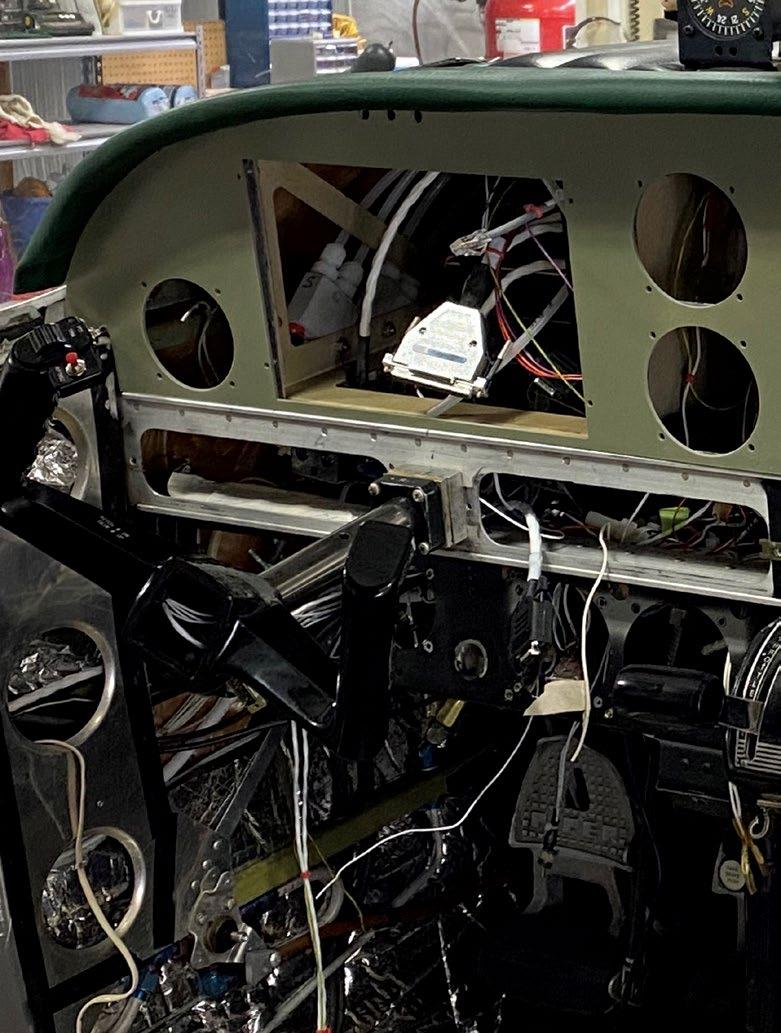 Above: The new panel with circuit breakers installed. All circuits were tested before component installation.
Above: The new panel with circuit breakers installed. All circuits were tested before component installation.
32 PIPERS DECEMBER 2022
Right: With the circuit breakers installed, avionics are ready to be installed.
placards professionally made and had the four-piece panel set painted in a green and gold color scheme matching the exterior. The center section is gold and is in line with the gold stripe on the outside.
• We didn’t have to drill any new holes in the airframe. There were plenty of empty ones in the firewall that provided all we needed. Unused holes were plugged. Antenna holes were reused but one extra hole had to be plugged.
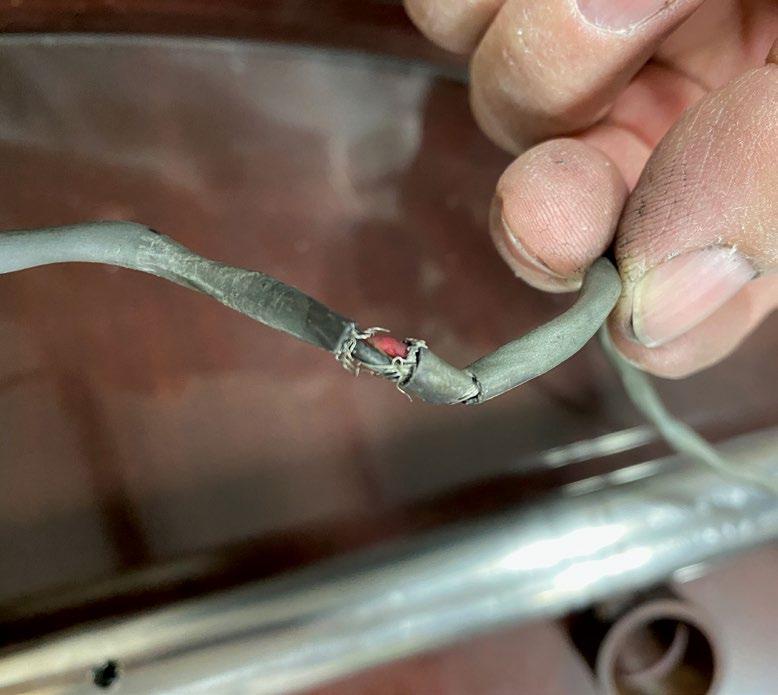

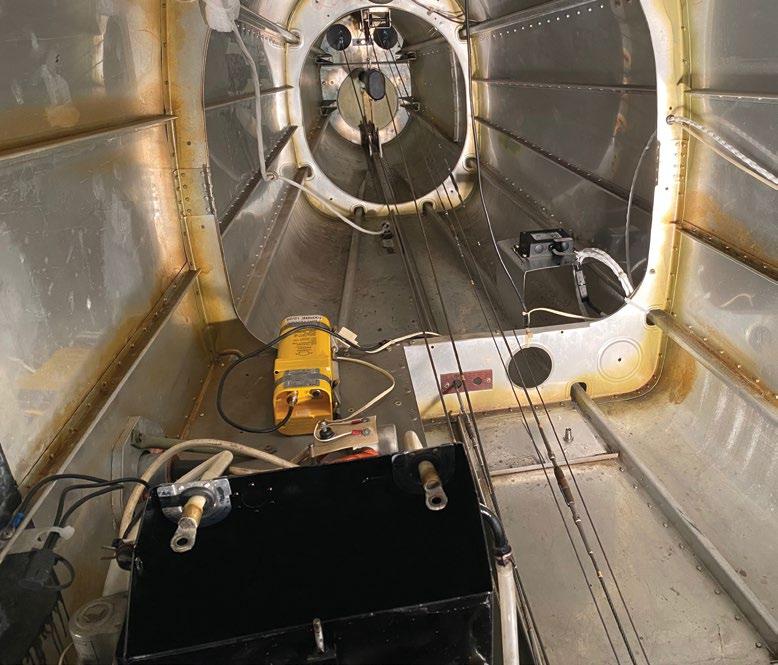
• Most airplanes haven’t been weighed since they left the fac tory. With equipment being installed and removed over the decades, there’s not much chance that the weight and bal ance on any given 50-year-old airplane is accurate. After removing all legacy equipment and old carpeting, the plane weighed 104.5 pounds less, which is more than 60 pounds different from my weight and balance data. I would con sider this significant for most singles.
• By selling nearly everything that was removed, I was able to recoup some cash. I even sold the ADF on eBay!
Top Right: Ever wonder how a trim motor can just “run away” all of a sudden? This was the PTT and Trim wire bundle where it exits the left yoke shaft behind the panel. The wiring insulation was worn and cracked, susceptible to a short. Weaver: “Remember what I said about giving a decades old airplane a lot of attention it otherwise wouldn’t get? It’s allnew wiring with a new rubber grommet now.”
MIddle Right: The upgrade entailed some work in the back of the plane. A 2" x 12" board made it easier to lie down.
Below Right: The magnetometer, ELT, and battery box reinstalled.
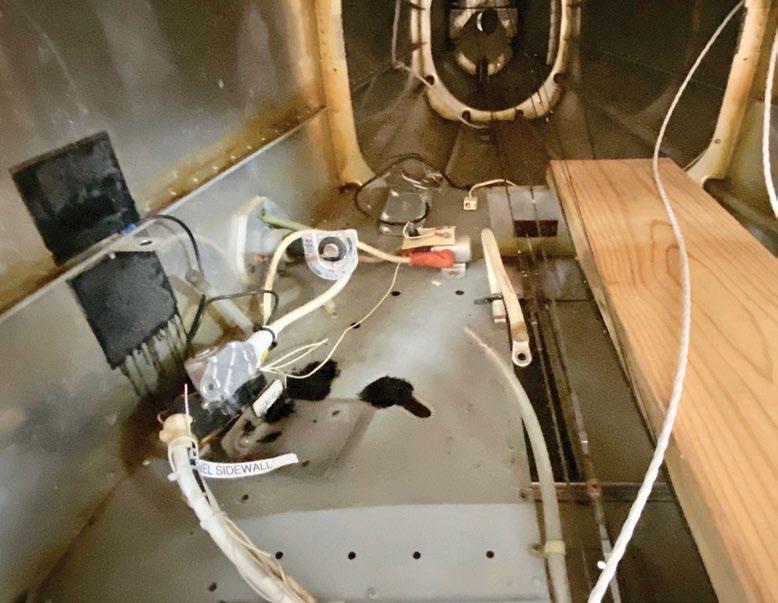
PIPEROWNER.ORG PIPERS 33
Pros and Cons of the Upgrade
As with any upgrade or renovation, some tradeoffs are nor mal and expected. In my case, there were a few but the pros greatly outweighed the cons.
Pros
• The panel is laid out the way I want, with optional equip ment such as a certified dual iPad charger.
• According to FAR 61.129j, I now have a Technically Ad vanced Airplane (TAA) that I can use to solo a student pilot or teach through commercial and CFII training, including the practical tests.

• I have the ability to train procedures with the Avidyne app on an iPad. The actual IFD540 in the plane has a “demo” mode allowing it to “fly.” Everything passes through to the Dynon so it can shoot approaches without leaving the hangar. (There are some limitations, however).
• The heavy vacuum system is gone, significantly reduc ing weight.
• My plane features 1,031.5 pounds useful load with four seats. That’s more than most Bonanzas.
• I get a fuel-efficient 8.5 gph.
• I had a relatively low initial investment in the plane.
Above: The new all-glass panel.
• As a nonretractable, the annuals and maintenance are relatively inexpensive.
• The insurance is inexpensive compared to retractable and higher performance planes.
• There are no more oil/fuel pressure lines behind the firewall and under the panel. (Your plane probably has one or both unless you have a digital engine monitor system installed).
• I have an incredible engine monitoring system.
• I can now do LPV approaches.
• I now have accurate weight and balance data, a lighter airplane, and much better performance.
Cons
• It’s a relatively slow airplane, just a little faster than a 172, but with the autopilot, it’s much more palatable than it used to be. It’ll be a great time builder for some one in the future.
• When finished, I had slightly more expense in the plane than it was worth but the cost would probably have been more than the value of most planes, not matter what I pur chased. The market has since taken care of this issue.
34 PIPERS DECEMBER 2022
Above: My first time lining up to wait on runway 12R at KCPS with synthetic vision. Note how the PFD view simulates the view through the windshield.
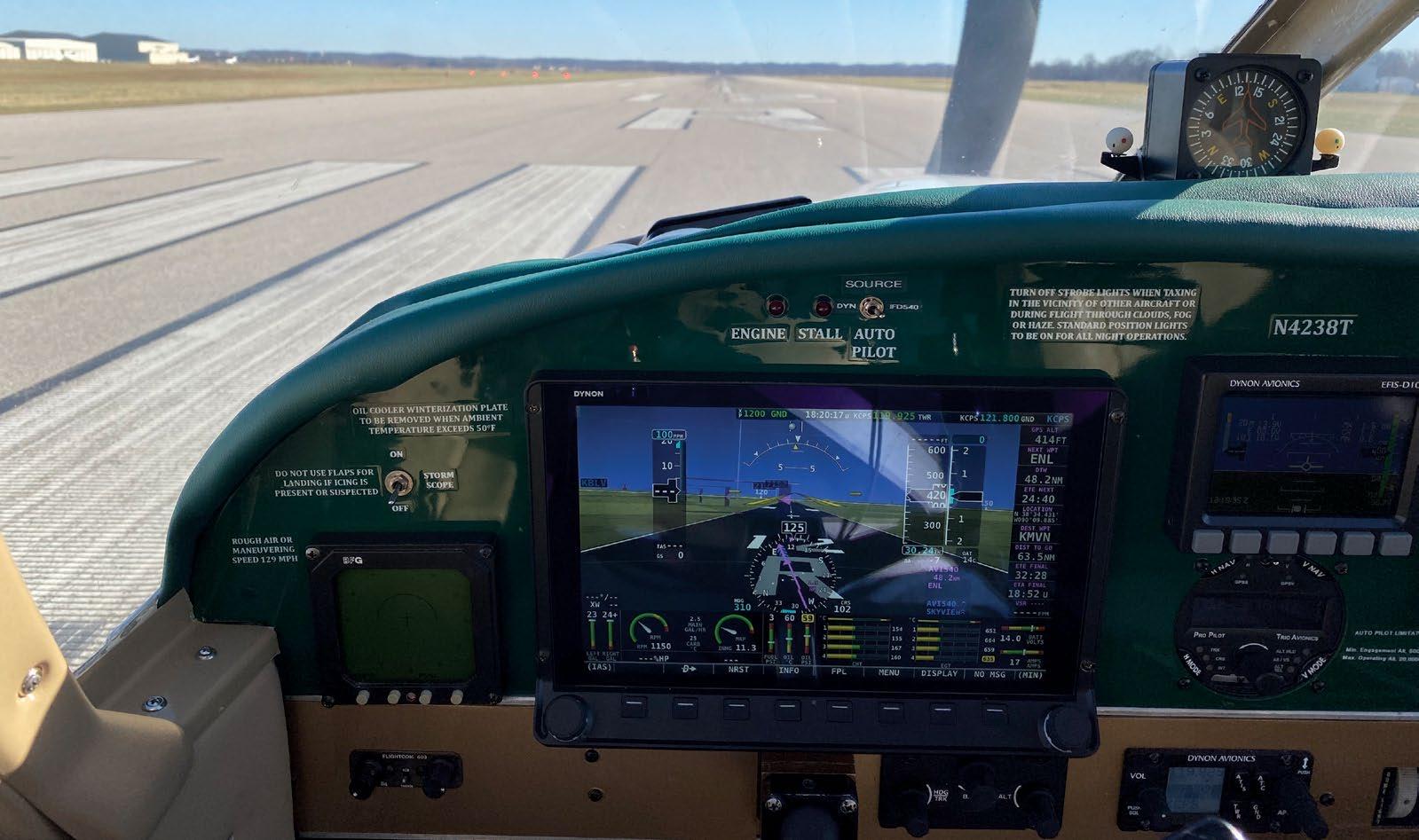
Right Middle: The Dynon can take screenshots. This will be very useful debriefing student performance after a flight lesson. Here is the PFD over the threshold on an RNAV/GPS approach 12R at KCPS.
Right Bottom: In a cruise descent IFR with WXR dis played on the Dynon.
• Dynon, Jeppesen, and ForeFlight subscrip tions are required, but I would probably have multiple subscriptions anyway.
• Two avionics systems need data updated monthly.
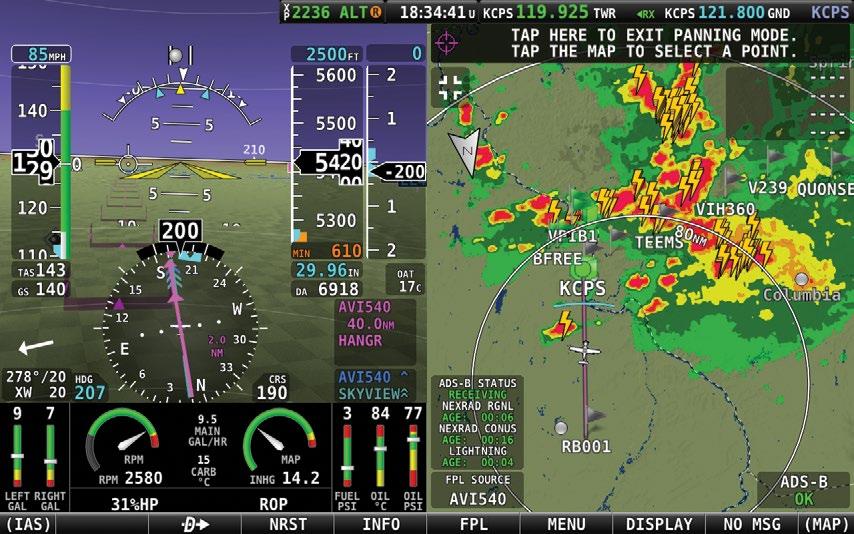


• It took several hours of test flying to cali brate and adjust the various components, especially the fuel flows and autopilot sen sitivity. It was all worth it, however, when the first time I took off I could see that the runway on my PFD Synthetic Vision was identical to the runway in the windshield.
There are a lot of exciting avionics available on the market and I believe the many older fixed-gear legacy airplanes are candidates for a major panel upgrade. The modern avionics will keep them flying and training the next genera tion of pilots for decades to come.
RESOURCES
Dynon, dynonavionics.com
PIPEROWNER.ORG PIPERS 35
I have a newfound respect for avionics shops and why they’re so expensive.
MEMBER ACTIVITY - Q&A
Red Overhead Lights Not Working
QThe red overhead lights in my 1959 Apache aren’t work ing. Does anyone know the type of bulbs these require?
—Kevin
Richardson
ARemove one of the bulbs and look at the side for type markings. Also, take a pic and post it here. Also, have you checked your parts manual?
—Scott Sherer, Piper Owner Society Aviation Director
ATest the bulb first. On my Warrior, those bulbs are grounded on a screw holding up the overhead console. Those screws loosen with vibration, which makes you lose the ground. It’s also easy to forget to attach that wire if you have removed the console for any reason. I usually can get the light working again by tightening the screws to the overhead console.
—kentshaw
Carb Heat Cable Needs Lubrication
QI have a 1966 PA-32-260. The carb heat cable is an oldstyle push/pull. I call it a lawnmower cable. It is very dif ficult to open or close, even when disconnected from the air box. Do any of you have experience freeing up a cable like this? I hate to replace it since its routing is very difficult.
—birtno
ABirtno, You’re on the right track. The carb heat cable is much like a lawnmower cable. Corrosion, grime. and/or old grease gum ming up the inside of the sheath are generally the culprits. Sharp bends or kinks in the cable will also cause binding. There is no easy fix, but here are a few things you can try before replacing the cable:
• Remove the cable from the sheath.
• Check the routing under the dash and remove as many sharp bends in the sheath as possible.
• Clean the cable and straighten it out.
Should I Get a Door Steward?
QI’m thinking about adding a Door Steward to the front door of my Saratoga. Recent reviews were very positive about its function and ease of installation. Any comments on interference from the mounting brackets or actuator with the door closed? (i.e., does the front mount ing bracket get in the way or create a problem for getting in or out of the plane?)
—Bobr
AI had a Door Steward in my Seneca and I now have two on my Arrow. I love them. They’re inexpensive, and I wouldn’t be without them. Very modern and effective. Two thumbs up.
—Scott Sherer, Piper Owner Society Aviation Director
AI’ve had one on my Lance for about a year and love it. Doesn’t get in the way and mounts flush with the door. I just mention to anyone entering to be careful not to step on the bar upon entry or exit.
—CharlesTack
Send Us Your Maintenance Questions
Names in this section are forum usernames. If you have a question that you and/or your A&P can’t answer or if you’re looking for a second opinion, take advantage of your membership. Contact us at tech@piperowner.org to get help from our staff or post your question at piperowner.org/talk
Disclaimer: We provide help to our members with maintenance questions, but since every plane problem is unique and we are unable to visually inspect your plane, we advise you to consult your A&P/IA.
• Buy a can of aerosol carburetor cleaner and an aerosol can of light oil, both with the straw.
• Tape an empty water bottle over the open end of the sheath under the cowling.
• Protect the inside of your cockpit with towels or plastic because the next steps can be messy.
• Put the carburetor cleaner straw against the open end of the sheath inside the cockpit and spray the cleaner into the sheath.
• Let the cleaner flush the crud out and into the bottle on the other end. Have a small container ready in the cockpit in case it back-flows.
• Repeat as necessary.
• Allow the sheath to dry out overnight. The next day, spray the light oil into the open end of the sheath until it runs into the bottle. Take the same precautions as with the cleaner.
• Sanding the end of the cable into a domed shape will make it easier to reinstall.
• Lube the cable and reinsert.
• Check for proper operation.
If you’ve removed the sharp bends, and the cable still binds, then it’s probably time for a new cable.
—Jim “Griff” Griffin
AThe motorcycle shops have a cable lubricator tool that pumps oil through the cable. There is an EAA webinar on how to do that here: eaa.org/videos/1567231599001, but you will need EAA membership EAA to view.
—kentshaw
AThanks Kent, that’s a fantastic idea. I didn’t know that de vice existed. Evidently, I did it the hard way.
Birtno, I’ll warn you ahead of time that even cleaning and lubing may not work. I’m at 50/50 success with my cables. One worked great, but despite my best effort, the other cable (mixture) had to be replaced. If you need to replace, I highly recommend the cables McFarlane carries.
—Jim “Griff” Griffin
36 PIPERS DECEMBER 2022
AAlso make sure the heat shields are in place for things like the prop control; otherwise, it gets baked from the exhaust heat. If the inner liner melts, it will be very stiff.
—Eric Panning
AI have had reasonable luck with “Kroil,” and “Mouse Milk” may work. It will actually wick right through the cable housing.
—n4211J
Trim Problem on a Saratoga
QI’m looking for anyone who has expertise with Piper elec tric trim on a Saratoga. I’m working on PA-32-301 with an electric trim problem. It works great in the trim down mo tion, but when reversing to trim up, the clutch chatters and hardly moves the cable. We have checked the cable tensions and they are set correctly. Any help would be greatly appreciated.
—Dtaglila
AYou’re going to need to check the entire cable pathway: the pulleys, the rear end, the trim knob, and spiral gear pointer, too. My trim jammed in flight just last month, and it was found to be the spiral gear pointer on the trim knob. And don’t forget the AD on the cables. They may need to be replaced.
—Scott Sherer, Piper Owner Society Aviation Director
ADo you have a dual button trim switch on the yoke where both must be actuated to adjust the trim? If so, this might be the issue. The left (smaller button) engages the clutch, and the right (larger button) drives the motor. If it clunks mov ing only the small button up or down, that is correct. If you move the large button only, nothing should happen. This is a safety feature to prevent runaway trim.
It is possible there is a wiring issue in the “up” circuit, and I would start with the switch to make sure the micro switches inside are working correctly and then trace back to the roll trim motor. I have not found a wiring diagram for this in my Piper Seneca IPC or maintenance manual.
Does the Saratoga also have a manual trim wheel? If this moves freely in both directions, then it is likely the clutch motor. If you do not have a manual wheel for trim, then this is a big safety issue in the current state, as the forces on the yoke to over come down trim would be significant.
—Eric Panning
ADtaglila, Scott and Eric’s troubleshooting tips are spot on. Check everything Scott mentioned in detail. If that doesn’t work, follow the electrical troubleshooting tips in Eric’s post. [The last paragraph above] contains a very important key. If the manual trim wheel is difficult to move, you probably have a cable or pulley problem. If the manual wheel moves freely in both directions, you probably have a clutch or servo motor problem.
Here are a few other items to check:
• This next paragraph is a synopsis from another Piper forum where a similar problem was reported. An often-overlooked item for electric trim on Pipers is the main servo plate on the
electric trim servo. “Over time the cable wears a deep groove into this pulley and the cable starts to bind, making it harder to move and rendering the electric trim almost useless. ... This is the most overlooked issue on PA-28 trim systems.” I know your plane is a PA-32, but many of the systems are similar.
• You mentioned the tension was checked, but also ensure the cable is the proper part number and length. I had a friend whose Cherokee 180 had trim issues. Turns out that prior to him owning it, someone had installed the wrong trim cable. (It was tensioned properly but was the wrong part.) Once the correct cable was installed, the trim worked properly.
• Have your A&P/IA confirm that the cables are routed cor rectly around the servo motor pulleys. Improper routing can cause the electric trim to work correctly one way but not the other.
• Check the servo motor for worn gears, bearings, and espe cially the clutch.
• Finally, ensure that all pulleys turn freely, and that the jack screw on the stabilator is clean and properly lubed.
—Jim “Griff” Griffin
AHere is what we found. All the pulleys were free and working as intended. We did notice that on full down trim travel, the motor worked fine. At the full travel mark, we noted the trim turnbuckle was making contact with the upper pulley. We also found the switch to be extremely worn out from years of use. Pulling the switch out enough to check it with a meter proved our suspicions that the contacts were toast. The switch price is a tad bit pricey at $1,225.
Update: After the switch repair, we still have the same prob lem. Although the switch wasn’t the full problem, testing of the switch found intermittent contact. The testing of the servo proved a problem with the clutch on the pitch servo. The servo has been removed and sent in for bench test and repair.
—Dtaglila
AI found two tips on the KFC 225 systems (which is a dif ferent trim manual):
1. The autopilot disconnect switch King used was un dersized, and it can sometimes be a source of intermittent fail ures in the autopilot and trim.
2. Watch out for the butt connectors used between the yoke harness and the rest of the plane. The motion of the yoke over time can break the connection under the heat shrink.
—Eric Panning
ADoes anyone know who repairs electric trim servos/ clutches? I have a PA-32. The pitch trim servo runs, but the clutch does not engage on the cable.
—jagcapt1
ADoes the clutch actuate? It is possible the clutch side of the switch is not working. I think on the King systems, one side of the split trim switch is the clutch, and the oth er is the trim motor.
—Eric Panning
PIPEROWNER.ORG PIPERS 37 MEMBER ACTIVITY - Q&A
What’s the Best Wing Walk Material?
QMy 1977 Arrow III has a typical black wing walk that still looks OK but doesn’t have much grip to it any more and is actually getting pretty slick, especially when wet. There are several options for wing walk at Aircraft Spruce, but I’m wondering if anyone has any recommenda tions. I’d rather not have to remove the current wing walk, as it’s in pretty good shape and clean, just a little slick. Any recommendations would be most appreciated. Thanks all.
—Arrowhead1965
AI used the painted-on wing walk to do mine. In five years, it’s about time to hit it with another coat. It seems the rivet tops wear faster for me. It is definitely grippy.
—Unit74
AI did mine four years ago with the stuff from Knots2U. It seems to be holding up very well
—Scott Sherer, Aviation Director
[Ed. Note: Scott’s wing walk restoration article ran in the May 2019 issue. Find it via piperowner.org/archive .]
AI always had good luck with UltraWing Walk, which you can get at Aircraft Spruce.
—Dtaglila
AI am in the position of redoing my wing walk, too. My wing walk has a lot peeling off around the door area and is getting close to the paint. How much prepara tion is needed? Do I need to scrape away the old all the way to the paint surface, or can I just remove what is loose then apply and fill in where it came off? Never tried this before so I want to prep correctly.
—Member
AI also recommend replacing the fuselage-to-wing rub ber seal after updating the wing walk.
—Eric Panning
AConclusion: I ended up going with the UltraWing Walk from Aircraft Spruce, and I love it! (Search “Ultra wing walk” at aircraftspruce.com.) I did not remove all the older coating. I just lightly sanded and roughed it up a bit. You can use a brush or a roller for the application (I used both) and found the roller to be more effective. The first coat seemed very incon sistent in appearance, and I was a little disappointed, but after the second coat, it was perfect! The dried finish is very sticky and definitely gives you firm footing either wet or dry.
Overall, I’m very pleased with this product, and for $42, you can’t beat the price. One note, do make sure you mask off the area entirely … this stuff tends to go everywhere. It is not easy to remove, so take the time to do the prep work. After that, 10-15 minutes is about all it took me per coat and it was done. Hope that helps.
Prop RPM Settings on Approach
QI was told by a CFI to always have the prop rpm on max for short final “in case you have to go around.” What do most Piper Lance pilots do? Set max rpm on final/short final, or limit to 2,700 or less to obtain and maintain recom mended approach speed?
—rhranzau
AIn my turbo Arrow and all my Senecas, I had props for ward to help slow the plane down. It makes a great brake, and, of course, in case you need to go around.
—Scott Sherer, Piper Owner Society Aviation Director
ATrue, I just hate seeing the EGTs spike up to max on the JPI Engine monitor.
—rhranzau
AMy POH for my 1969 28R-200 says to set the prop at 2,600 rpm instead of 2,700 to give you go-around power and not over rev the engine on a go-around.
—Fgump52
AFor the Seneca III, the POH has full forward for the props, and I agree with Scott that they make for nice brakes. The props should not over rev, as they are controlled by the governor to the max rpm. The big concern on go around is over boost with the fixed wastegate design common to the TSIO-360 series. On short final with partial power and the props full forward, the rpm will be likely be less than full because of the low power gen erated at partial power settings (similar to taxiing or engine runup).
—Eric Panning
APushing propeller forward at low power setting should not cause EGT to be very high … something is odd. What is your mixture setting?
—Kzadora
AI usually will pull the power back on final to capture the visual glide slope from the high side, apply full prop, and then add back some throttle to maintain.
Where is your mixture in all of this? Full forward? I usually have the mixture a bit lean on approach as you can get a light backfire. If your descent rate is relatively high, the prop can spin faster than the engine is set up for (prop driving the engine). In this case, the air pumping might exceed the fuel servo position and you could maybe hit peak? Just speculating here.
For non-geared engines at low power settings, this is not a big issue either way. At low power EGT can be anything. The temp might be high but there is no mass flow versus full power.
—Eric Panning
AMy fuel mix is always on full rich on final/short final. Sometimes at KPDK, they keep you high until close, then it’s chop and drop. Thanks for the input.
—rhranzau
38 PIPERS DECEMBER 2022
MEMBER ACTIVITY - Q&A
—Arrowhead1965
AIn my 1985 Dakota, I go prop full on final and leave my mixture at LOP. If I have to go around, my hand auto matically covers all three levers.
—Flyboy208
AI fly the pattern and approach with the prop still set in cruise (for me, that’s 2,300 to 2,400). During the first GUMPS (midfield if a visual, IAF if an approach), I con sciously leave the rpms alone for the “P.” At around 17 to 18 inches MP during this phase, there are no concerns with lugging the engine.
On final / FAF, the aircraft is pitch and speed stabilized, and then I go through another GUMPS, where this time the prop goes full forward. MP during this phase is already fairly low. As the prop lever goes forward, there is no noticeable change in sound, no noticeable change in rpms, and no additional “push back” feel of drag from the prop. At this point, the Saratoga is fully configured for both landing and takeoff. Should I need to go around, there is no real thinking about reconfiguration. Just push the throttle full forward and then grab the other two, which are already there. Easy-peasy.
—jacobsja
Recommendation Needed for KY 197
Repair or Replacement
QThe display on my #2 radio, KY 197, has finally gone out completely. The avionics man is having trouble finding a replacement display. I expect to replace the radio once I complete my IFR rating, so I’m only interested in fixing it for minimal expense. Any leads on a display or an inexpensive re placement radio would be appreciated.
—TMcCArcher
AYou see nothing on the display? They are often moisture sensitive, so you might take it home and dry it out in a warm dry house. Pacific Coast Avionics in Aurora fixed mine with a dimmer issue and I think it was around $600. A cer tified used model is around $1,500. I am not aware of another comm radio that would just slide in.
 —Eric Panning
—Eric Panning
APreviously, some of the numbers segments weren’t show ing. It would brighten up when shining a light on the ambient light sensor. It finally blinked and went out com pletely. I understand the gas in the displays gradually escapes over time.
—TMcCArcher
ATry Bennett Avionics. Bennett is a very good, reliable company. I highly recommend them.


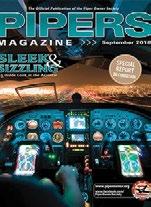
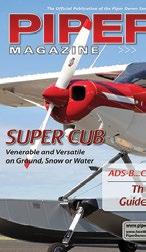 —Scott Sherer, Piper Owner Society Aviation Director
—Scott Sherer, Piper Owner Society Aviation Director


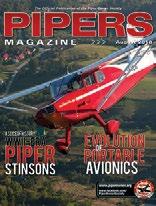

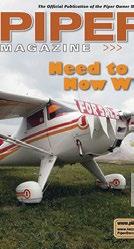

AAs Scott posted, Bennett is who I was looking at for a used unit at around $1,500. I would avoid eBay sellers, etc., as they all will have the same issues as you have with your cur rent one. The gas does leak but the usual display issue is poor con nections/corrosion on the display connection to the main board. They end up sensitive to humidity and especially in winter.
I have a KN 80 (world’s largest DME) that has some missing digits on a cold startup but ends up with all working when it warms up. I now run a 500w mini heater and place it so it directs the heat under the panel. Since I have done this, I have had no issues with the displays. Your vac and electric mechanical gyros will also appreciate being warmer.
—Eric Panning
AAnother consideration if the budget allows is the Trig TY97 comm radio. I picked one up last month for my in-process panel upgrade. Tray and connector are differ ent (DB25 for the Trig vs Molex for Bendix), but it’s a fairly easy install (mostly re-pin connector). You get a new radio with a two-year warranty. The stock isn’t depleted as much as Garmin units, and the TY96A is less than $2,000 new.
—djspathis
AYou can also get the Garmin GTR 200B PMA for less than $2,000.
—wgrasqu
AThanks for the thoughts and ideas. I was able to get a re placement KY 197 for $795. It works well.
—TMcCArcher
PIPEROWNER.ORG PIPERS 39 MEMBER ACTIVITY - Q&A Contact Sales Account Executive Steve Cook SteveC@jpmediallc.com 715-445-5000, ext. 116 Get Your Company Noticed Year-Round
1975 PA-28R-200 Arrow II Wisconsin
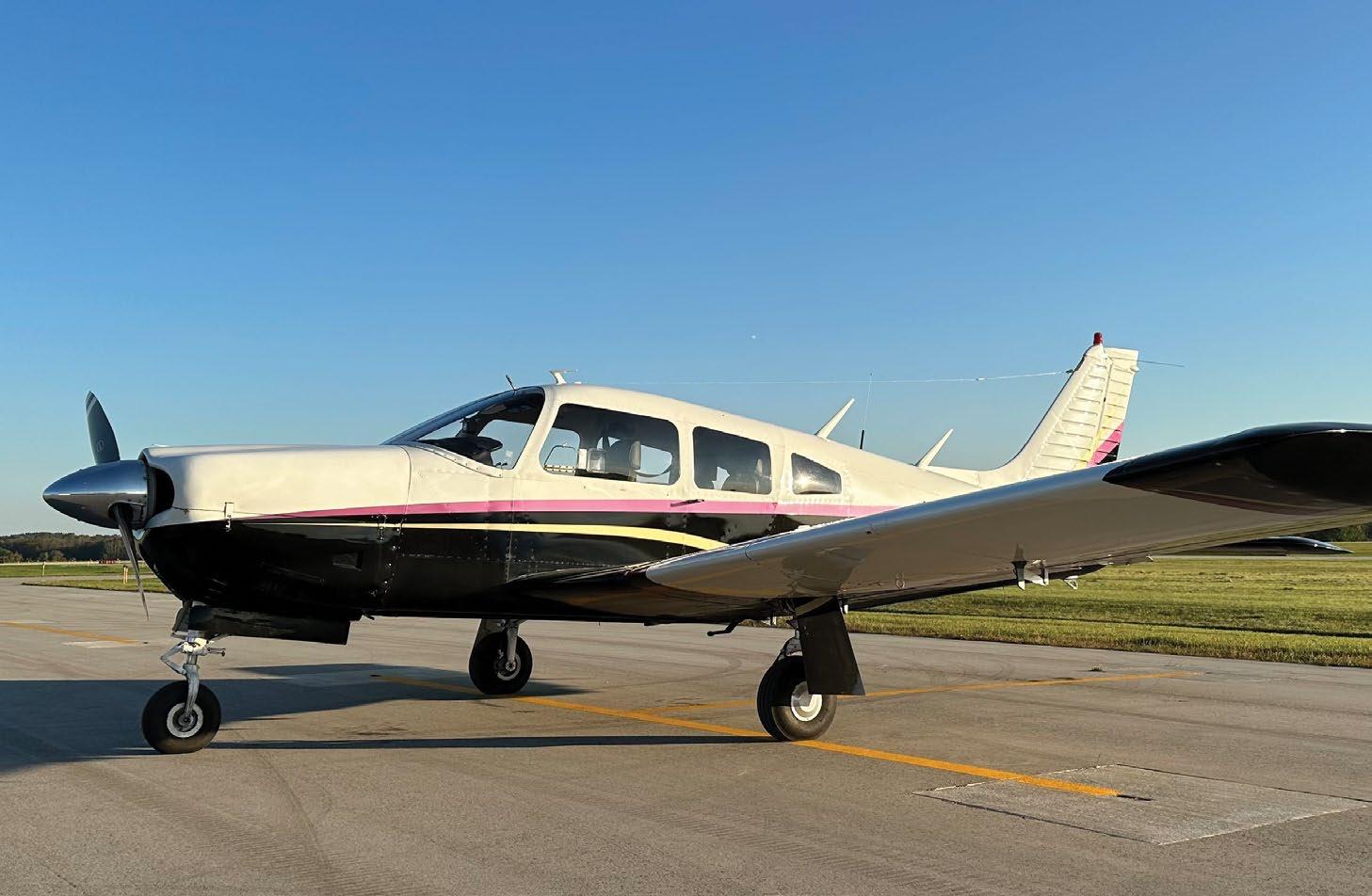
Special or Unique Features
Acquired from Newnan, Georgia, in September 2021. This low-time (sub-1,400 TTAF) Arrow II was just repositioned from Milwaukee to West Bend, Wisconsin. The entire inte rior was replaced this last winter. It will soon have a complete avionics upgrade.
What are your three top tips for people who own, or are considering buying, your plane model?
1. A comprehensive prebuy should be done by one who knows the ins and outs of the particular model.
2. The market is crazy, so move fast with a ready-to-go sales agreement.
3. Be OK with walking away from the deal if it’s not the right fit.
What was your most-recent upgrade?
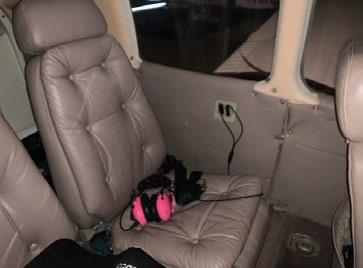
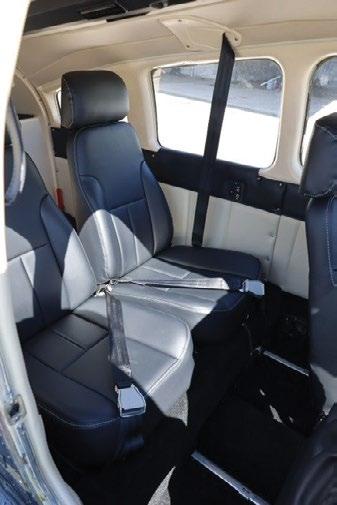
Complete interior. It was a lot of work, but with atten tion to detail, it turned out well. I’ve received a lot of posi tive feedback. The parts manual will be your best friend. Ask others for recommendations or clarification. Many airplane owners are quite generous with their time and knowledge.

Clockwise from upper left: The interior before the upgrade. • Interior back after upgrade. • Interior front after upgrade.
What is the biggest ongoing challenge with this aircraft?
Self-control in making (or quoting) upgrades. There’s al ways something to improve or personalize.
What is the best reason to fly this aircraft?
Reasonable cost to operate for performance. Good for fam ily trips. Good retract time builder.
What is your advice to somebody who’s considering buy ing this model, or who recently purchased this model?
I’d stick with the Arrow II or III, as the extra cabin length is nice. Plan for a hefty insurance cost if you have low retract able time. Have money set aside and ready to go for after purchase when surprises pop up.
Daniel Young
40 PIPERS DECEMBER 2022 MEMBER
MEMBER
ACTIVITY -
PHOTOS
On the ramp in West Bend, Wisconsin (KETB).
MEMBER ACTIVITY -
Below:
1960 PA-24-180 Comanche
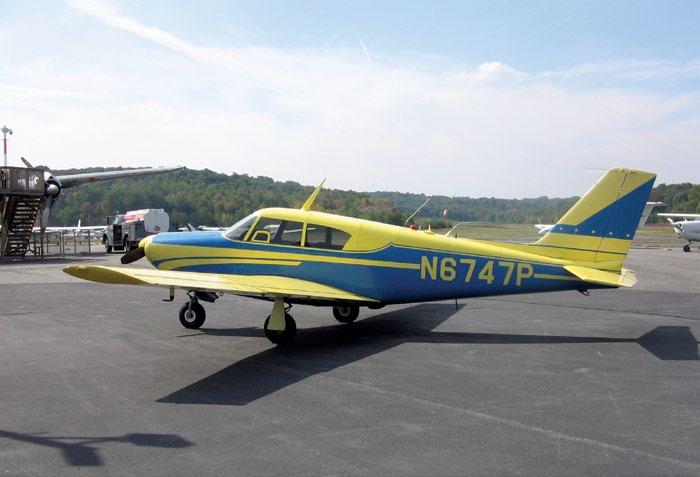
Florida
Special or Unique Features
It’s a “brand-new” 1960. It’s totally restored and got painted in 2020. It flies like a new airplane. Most importantly, it doesn’t have a drinking problem like some of the higher-powered planes.
What is your top tip for people who are considering buying your plane model?
Even though the price of planes has skyrocketed, a Comanche is still within reason for all that you get for the money.
What was your most-recent upgrade?
The plane was painted by Hawk Aircraft in Zephyrhills, Flor ida. We installed wing root fairings and a windshield fairing. I had previously installed Metco wingtips. None of the speed mods seemed to make much difference, but they look better.
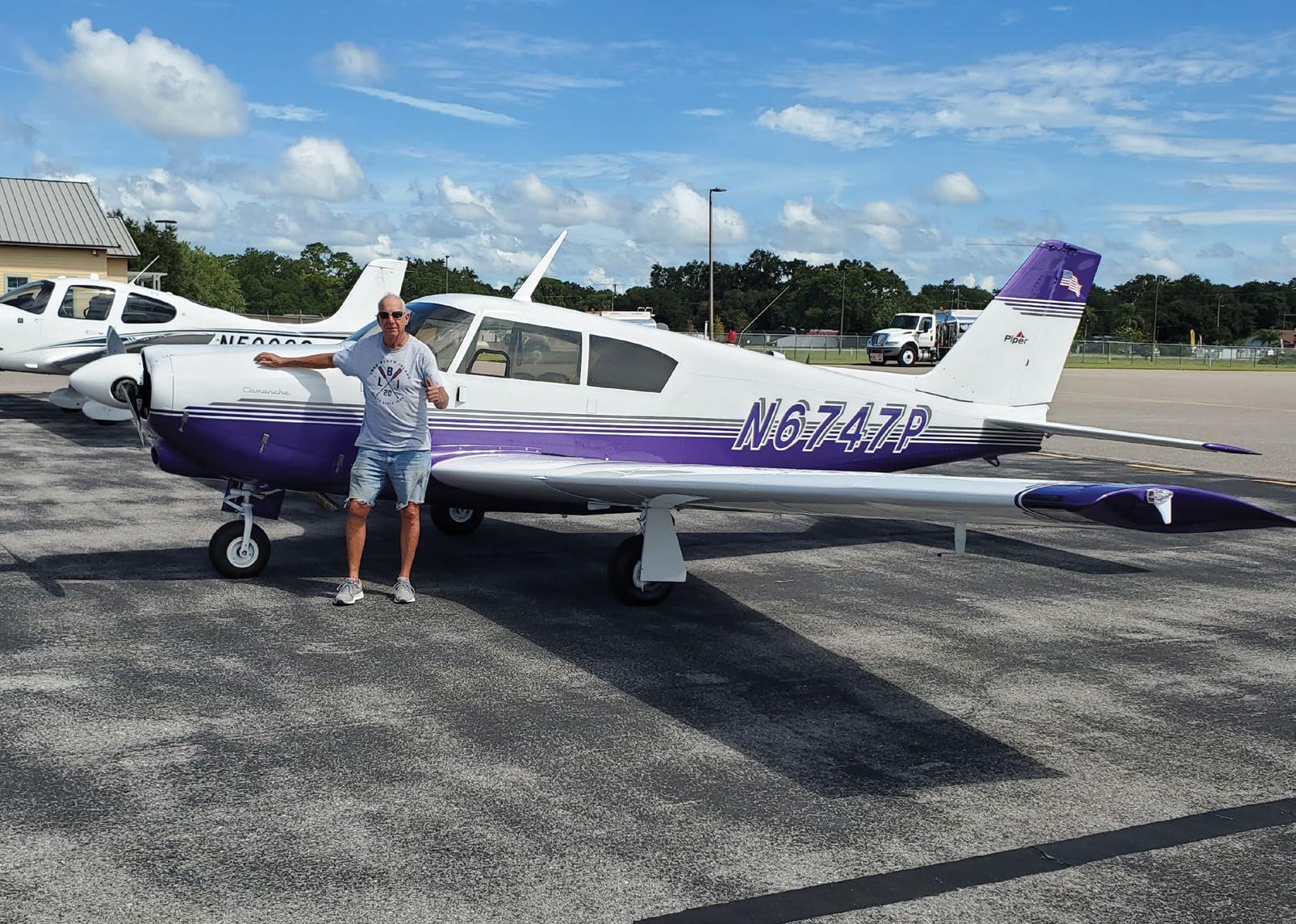
What is the biggest ongoing challenge with this aircraft?
There are no more ongoing challenges. Everything has been brought up to like-new specs. The Aussie horn was installed. Annuals are a breeze now.
What are the best reasons to fly this aircraft?
I’ve owned her since 1993, and she’s always brought me home.
What is your advice to somebody who’s considering buying this model, or who recently purchased this model?
Do a thorough prebuy inspection by a mechanic who knows Comanches. Once you own it, don’t be cheap. Do what’s neces sary to get it up to factory standards. Then you’ll have a plane like mine that will take good care of you.
Dave Windecker
PIPEROWNER.ORG PIPERS 41
PHOTOS
MEMBER
Above: Dave’s fully restored Comanche with new paint.
Dave’s Comanche before its 2020 paint job.
FAA Issues Service Bulletin Updating Wing Spar Guidance; Seeks Feedback
On Oct. 19, the FAA released a SAIB (Special Airworthiness Information Bulletin) regarding wing spar cracks in Piper PA-28 and PA-32 aircraft. The bulletin isn’t a required AD (Airworthiness Directive) but, rather, updates plane owners, operators, mechan ics, and inspectors about information gathered from inspections required by AD 2020-26-16, which was issued in 2020 because of a fatal accident in 2018 caused by fatigue cracks that led to a wing spar failure. That AD required a one-time, eddy current inspection of certain lower spar cap bolt holes.
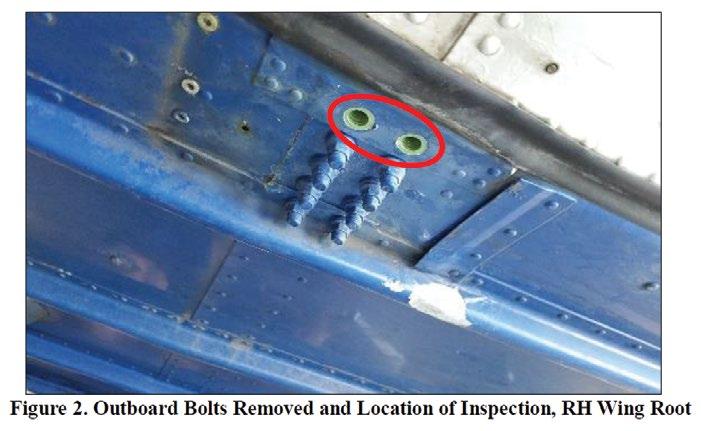
Results of the inspection required by AD 2020-26-16 indicate that the problem is widespread enough to likely warrant an other airworthiness directive and that one goal of this SAIB is to gather more information. A future AD may require frequent inspection of aircraft that have already been inspected and may require additional planes to be inspected.
The FAA recommends that owners and operators provide ad ditional information and feedback on the availability of quali fied eddy current inspectors, how Factored Service Hours (FSH) are calculated, reporting cracks or damage not already reported, and other feedback on information covered in the SAIB. The full SAIB includes the contact details for submitting informa tion and feedback.
Some key parts of the SAIB are copied here:
This SAIB alerts all owners, operators, maintenance techni cians, and inspectors of Piper Aircraft, Inc. (Piper) PA-28 and PA32 airplanes of information gathered as result of a fatal accident of a Piper Model PA-28R-201 airplane in 2018 and the inspection findings that followed. The accident, determined to be caused by fatigue cracks in the lower spar cap, resulted in the Federal Avia tion Administration (FAA) issuing Airworthiness Directive (AD) 2020-26-16, which requires several actions including a one-time inspection of certain lower spar cap bolt holes. AD 2020-26-16 was issued as an interim action and requires reporting certain in spection information to the FAA to help determine the number of cracks present in the fleet. The inspection reports received by the FAA thus far indicate the presence of numerous cracks and holequality issues in a significant number of airplanes.

The FAA is concerned that the presence of cracks and other hole-quality issues could lead to additional in-flight wing sepa rations if additional actions or modifications are not taken. Analysis of the AD inspection data along with additional analy sis by various contributors, including Piper and the U.S. Air Force, is guiding the FAA to develop further corrective action. These analyses are indicating a possible need for frequent in spections, and inspections of additional airplanes beyond those initially inspected per AD 2020-26-16, to ensure proactive de tection of fatigue cracks.


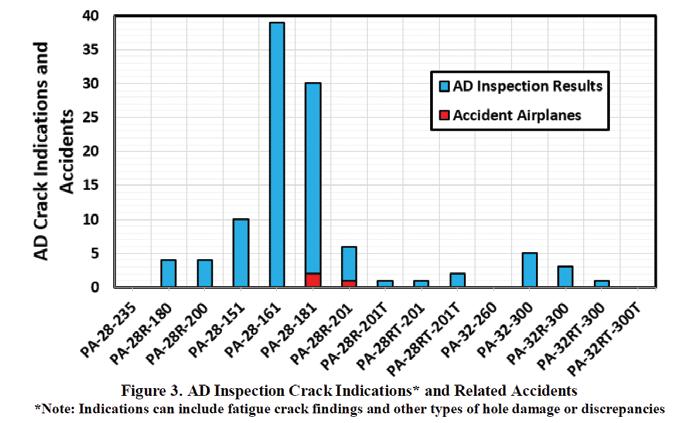
The FAA has determined that this airworthiness concern is an unsafe condition that warrants AD action under Title 14 of the Code of Federal Regulations (14 CFR) part 39. The actions specified by this SAIB are not mandatory; however, the infor mation requested by this SAIB will help the FAA develop an AD action to address this unsafe condition.
Recommendations
The FAA is recommending that owners and operators provide the following information. Reporting is voluntary. The FAA will analyze the information received to deter mine further action. As part of its commitment to continued
42 PIPERS DECEMBER 2022 NEWS
operational safety, the FAA is monitoring the Piper PA-28 and PA-32 airplanes for issues related to lower main wing spar cap cracks and requests submission of such reports.
1) Availability of Eddy Current Inspectors
The FAA is concerned about the availability of eddy cur rent inspectors to perform inspections of the high-time air planes. The FAA recommends providing information regard ing the number of inspectors, including Level 2 and Level 3, available to perform inspections similar to those required by AD 2020-26-16.
2) Factored Service Hours (FSH) Feedback
The FAA has received both positive and negative comments about the FSH approach to setting the inspection threshold for AD 2020-26-16. By using a factor, the intent was to target inspections to the airplanes that were most likely to be en gaged in training, which was one of the risk factors identified. While this necessitated some complexity in the calculation of inspection times, it significantly reduced the cost of inspection for personal use airplanes. EASA AD 2021-0107R2 uses a dif ferent method for determining factored service hours because in the European Union all aircraft are required to complete 100-hour inspections regardless of the operational require ments. In the United States 100-hour inspections are only re quired when operating for hire. In the FSH calculation, the EASA method accounts for the age of the airplane whereas the FAA AD 2020-26-16 method accounts for a combination of age and the number of 100-hour inspections. The EASA method was developed to account for the FAA’s FSH method under the European Union regulatory system. We appreciate any feedback on the practice of using an FSH, and what the factors should be in the equations embedded in any future in spection thresholds and intervals. The EASA AD is available at ad.easa.europa.eu
3) Cracks or Damage Not Already Reported
The FAA recommends reporting any crack(s) or damage found in the wing spar bolt holes if not already reported to the FAA or Piper per AD 2020-26-16 or other means. Please provide the airplane model, serial number, hours TIS, num ber of 100-hour inspections, photographs, and a description of the damage found in any wing spar bolt hole.
4) Other Feedback

The FAA welcomes any additional feedback on what has been discussed in this SAIB.
The FAA asks that you provide this feedback here:
Fred Caplan, Aviation Safety Engineer, Atlanta ACO Branch, FAA, 1701 Columbia Avenue, Atlanta, GA 30337; phone: (404) 474-5507; email: frederick.n.caplan@faa.gov
Download the entire SAIB and join the discussion in our member forums by visiting piperowner.org/news
NavStrobe Releases First User-Installed Light System for Certified Aircraft
NavStrobe Lighting Ltd. and Aircraft Spruce announced the world’s first user-installed strobe light system for certi fied aircraft.
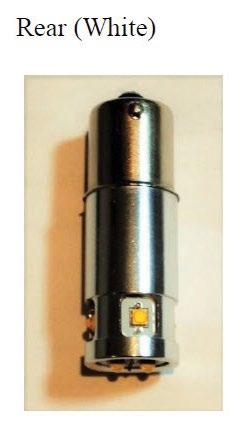
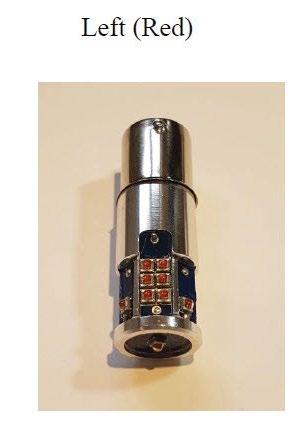
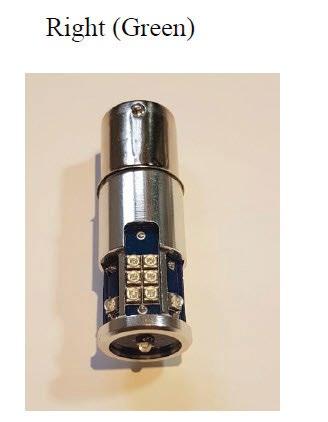
The Sextant 5.5 kit is FAA/TCCA TSO-C30c Compliant and is a direct replacement for standard Whelen or Grimes position lights. Simply replace the wingtip and rear position light bulbs, then use the existing nav switch in the cockpit to select either the standard navigation mode or ultra-bright strobe mode.

Nothing else is required. Installation takes 10 minutes and one screwdriver.
From the press release:
“The first time you use the existing Nav (Position) switch, the FAA requires that the lights come on in the steady-on mode. By simply turning the same Nav switch off and back on, the position lights will enter the strobe mode to cause the col ored LEDs to flash. This mode will directly replace any existing strobe lights on the aircraft with greater recognition since the human eye is four times more sensitive to colored lights than the standard white strobes.”
The kit shown comes complete to put strobes lights all around your aircraft. To be TSO compliant, you must also replace the colored glass lens covers currently installed and put in the clear lens provided in the kit. There are no new wires or switches required.
The kit is available on AircraftSpruce.com by searching for “NavStrobe.”
PIPEROWNER.ORG PIPERS 43 NEWS
FAA Adds Oil Options for Lycoming
On Sept. 26, the FAA issued Special Air worthiness Information Bulletin (SAIB) NE-06-31R6, which alerts owners of air craft with certain Lycoming engines about changes related to lubricating oils. The first concerns the name change of an approved additized lubricating oil. ConocoPhillips changed the name of Phillips 66 Type 100 AW to Phillips 66 Victory Aviation Oil 100 AW. The second change concerns the addi tion of Phillips 66 Victory Aviation Oil AW 20W-50AW to the list of approved oils.
Engines Involved: O-320-H, O-360-E, LO-360-E, TO-360-E, LTO-360-E series engines. Read the entire bulletin at piperowner.org/news
Genesys S-TEC 3100 Autopilot Nears
Approval for PA-30/39

Genesys is nearing completion of its S-TEC 3100 auto pilot STC for the Piper 30/39 Twin Comanche aircraft. The STC is expected to be completed in the first quarter of 2023, and the company is taking orders for installation in 2023.
The S-TEC 3100 Digital Flight Control System (DFCS) is the most advanced autopilot for most types of single- and twin-engine aircraft. The system is an attitude-based auto pilot that provides workload-reducing and safety-enhancing capabilities previously unavailable on aftermarket autopi lots. It is compatible with advanced digital sources and EFIS displays from Garmin, Aspen, and others and includes fea tures like automatic trim, 2- or 3-axis options, envelope pro tection and alerting, and more. Learn more at genesys-aerosystems.com
Piper Creates Wing Inspection Panel Kits
On Sept. 30, Piper released Service Spares Letter No. 503 announcing the availability of a kit that adds an inspection/ access panel to the lower wing skin on both sides of affected aircraft. When installed, the panels permit easier access to the fuel tank sending units. Piper part number 88666-701, Kit – Lower Wing Skin Inspection Panel provides the parts and instructions to install access panels. Each kit includes the parts for two panel installations. The kits are available from Piper Approved Service Centers.
Models affected: PA-28-151 Warrior, PA-28-161 Warrior II/III, PA-28-161 Cadet, PA-28-181 Archer II, PA-28-181 Archer III, PA-28-181 Pilot 100i, PA-28-236 Dakota, PA-28201T Turbo Dakota, PA-28R-201 Arrow III, PA-28R-201T Turbo Arrow III, PA-28RT-201 Arrow IV, and PA-28RT201T Turbo Arrow IV. Find the serial numbers involved and download the letter at piperowner.org/news
Piper-Related Fatalities on Pace With 2021
Two crashes on September 14 accounted for the 31st and 32nd fatalities involving Piper airplanes so far in 2022, according to FAA data. That is on pace with last year’s 41 fatalities.
The Piper Owner Society occasionally recaps fatalities as a learning tool for pilots, as the reports are very often informative and important. We have aggregated all of the available reports into one PDF on our website.
One of the crashes killed three people who were on a work trip for church. Another was a hunter in Alaska. In July, a collision between a 172 and a Piper Malibu Mirage killed four people.
Diagrams and photos are in the PDF, which is a combined PDF of all preliminary reports issued so far in 2022, aggregated by oldest to newest. Download or read it at piperowner.org/news
FAA Proposes Coupling AD for Turbos
The FAA announced a proposed AD affecting turbocharged, reciprocat ing engines with certain v-band couplings, includ ing both Cessna and Pip er aircraft. The proposed AD was prompted by failures of spot-welded, multi-segment v-band couplings at the tailpipe to the turbocharger exhaust housing flange.

According to the FAA’s announcement, “Since the mid-1970s, failures of v-band couplings that attach the exhaust tailpipe to the turbocharger exhaust outlet have resulted in a significant number of incidents and accidents (fatal and non-fatal) … ”
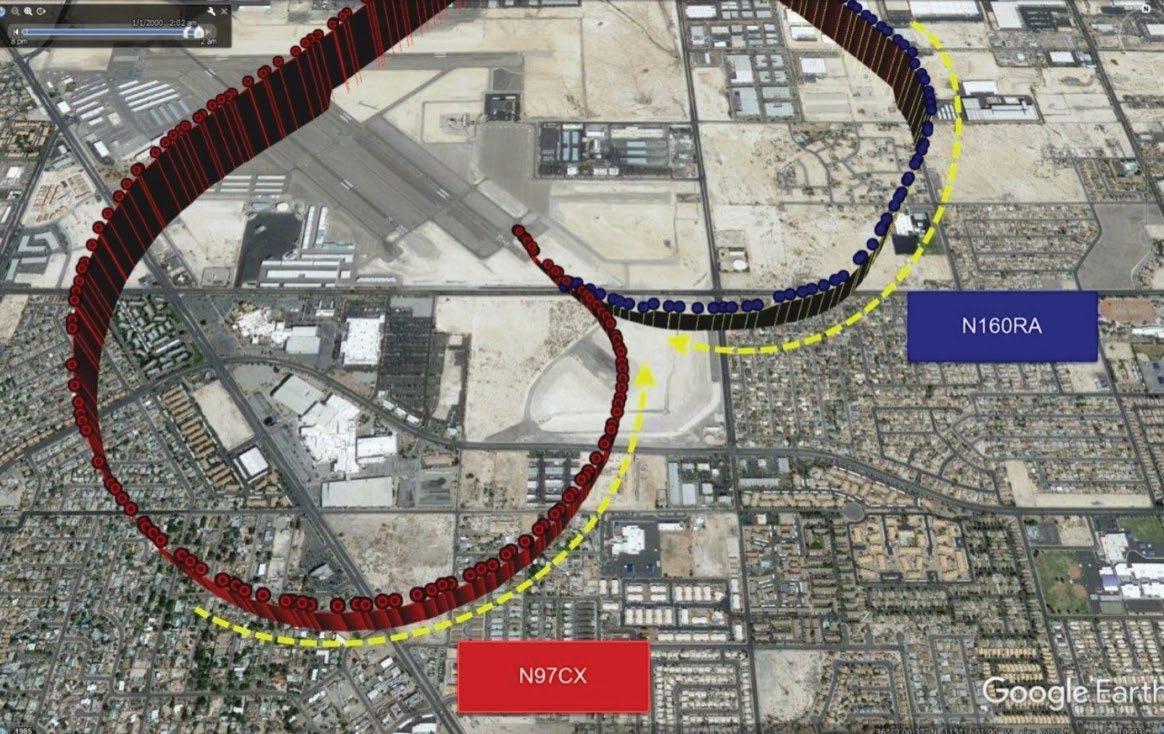
As a result, this proposed AD would establish a life limit for these couplings and require repetitive inspections of them. The FAA will consider comments on this AD through November 4, 2022.
For more information and a list of the Cessna and Piper mod els affected, visit www.regulations.gov/document/FAA-20220891-0001 or piperowner.org/news
44 PIPERS DECEMBER 2022 NEWS







PIPEROWNER.ORG PIPERS 45 ADVERTISERS INDEX & WEB SITE DIRECTORY Advantage Aviation Insurance . . . . . . . www .iflyaai .com . . . . . . . . . . . . . . 29 Aero-Mach Wilco, LLC www wilcoaircraftparts com 29 Aerox Aviation Oxygen Systems www aerox com 39 Aircraft Spruce and Specialty Co www aircraftspruce com 3 Airward, Inc airward com 45 Alpha Aviation, Inc www alphaaviation com 15 Burl’s Aircraft burlac com 5 Chief Aircraft, Inc . . . . . . . . . . . . . . . www .chiefaircraft .com . . . . . . . . . . 25 CiES, Inc www ciescorp net 27 Colombia Avionics www AvionixHelp com 27 Eagle Fuel Cells, Inc www eaglefuelcells com 29 General Aviation Modification (GAMI) www gami com 15 Hangar 14 Maintenance Solutions www hangar14 net 45 JP Instruments . . . . . . . . . . . . . . . www .jpinstruments .com . . . . . . . . . 48 K&K Precision Welding www precision-welding com 21
2U, Ltd . . . . . . . . . . . . . . . . www .knots2u .net . . . . . . . . . . 27
Aerodynamics www microaero com 15
High Oxygen Systems www mhoxygen com 21 NavStrobe Lighting navstrobelighting com 13 Niagara Air Parts, Inc www niagaraairparts com 21 Oregon Aero oregonaero com 45 Plane Parts Company www planeparts com 7 Poplar Grove Airmotive, Inc . . . . . . . . www .poplargroveairmotive .com . . . . 21 Precision Hose Technology www aircrafthose com 29 Preferred Airparts www preferredairparts com 29 R & M Steel Co aviationbuildingsystem com 15 Sarasota Avionics, Inc www sarasotaavionics com 47 Skysmith Insurance www skysmith com 25 Univair Aircraft Corp . . . . . . . . . . . . www .univair .com . . . . . . . . . . . . 2 Valve Wizard www valvewizard com 45 “Not only are the seats comfortable, they also increase the crashworthiness of the airplane. This is not something you might want to think about, but I get paid to think about that. The seat fabric looks great, too. Since my airplane carries eight hours of fuel, these seats help me fly the entire eight hours in comfort.” HANGAR 14 MAINTENANCE SOLUTIONS LLC Visit our website: hangar14.net • 50 years of aircraft experience • Major & Minor aircraft Repairs • Installation dealer for JPI • STC Modifications • Import & Export Services • Need help with your aircraft? Set an appointment Today! 100 Airport Rd Hangar 7, Santa Teresa, NM 88008 (575)589-0303 Get a quote Today! Piper made it MANDATORY ... AirWard made it EASY! MC • VISA AMEX DISC • PayPal1.800.524.3264 See/order k its at air ward.com For All PA-28s and PA-32s Hundreds of kits sold since 1997 Mandator y Ser vice Bulletin 1006 Wing/Fuel Tank Corrosion Inspection required ever y seven years Mandator y Ser vice Bulletin 1345A Main Wing Spar Inspec tion Mandator y Ser vice Bulletin 1304A Main Wing Spar Corrosion Inspection Mandator y Ser vice Bulletin 1244C Aft Wing Attach Fitting Inspection required ever y seven years and/or 2000 hrs Mandator y Ser vice Bulletin 1242 Rudder Pedal Assembly Inspec tion VALVE WIZARD Hands-Free Valve Spring Compressor Tool View online video to see how to save time & money! www.valvewizard.com 888.825.9493
Knots
Micro
Mountain
by Scott Sherer Aviation Director


Handheld Transceivers on a Budget
Idrank the lemonade a few years back after reading again and again in other aviation magazines that we’re sup posed to have a backup radio in case our panels go dark. According to the pun dits, having a second, panel-mounted nav/comm isn’t enough. So let’s see, I’ve owned eight airplanes and flown doz ens more. Last year, I had three alterna tor failures, but I’ve never had a panel go dark. Nevertheless, I bought into the scenario and did some research on Icom, Yaesu, and Sporty’s handhelds.
At home, I have two amateur radio transceivers: an Icom 7300 and a Yaesu FTDX-101MP. Both Yaesu and Icom make A+ equipment. Ultimately, I pur chased a Sporty’s SP-400 because it has nav/comm/ILS-VOR in it and it features a large-format screen and buttons, mak ing it easier to use in a bouncing airplane. However, when I’m walking around my airport or AirVenture, it’s too big. So I was looking for another backup comm for walking around that’s smaller and lighter but just as high quality. I started looking at Aircraft Spruce and other sup pliers, but I really didn’t want to buy an expensive new radio.
I had an epiphany and went online to eBay, where I found many used hand held transceivers. Some were new and high-priced. Some were very old for very little money, but I have no idea if they worked or not. After a couple of weeks of infrequent searching, I came across an Icom A-22 Nav/Comm. It came with a manual, antenna, wall char ger, NiCad battery pack, and AA-cell battery pack. I plugged in the NiCad bat tery pack and, not surprisingly, it didn’t work. I plugged the charger into the bat tery pack, but after a few hours, it still didn’t work. I removed the NiCad pack and set it aside. I put alkaline AA batter ies in the other battery pack, attached it to the radio, powered it up, and it worked perfectly. I brought it to the airport, test ed the transmit function, then took it airborne and tested the VOR. It worked perfectly again.
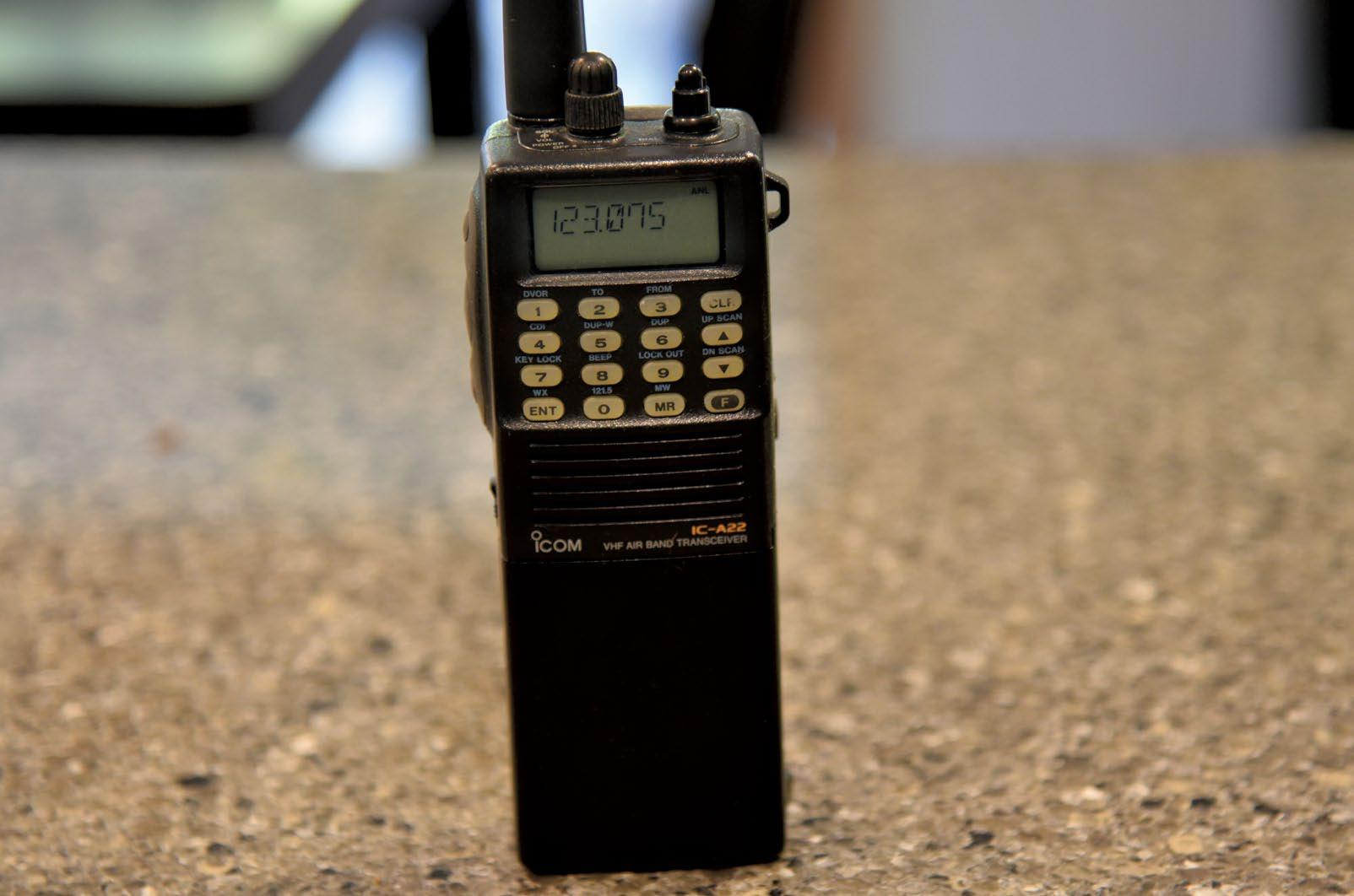

When I got home, I retrieved the NiCad battery pack and found the model number. I ordered a new rechargeable battery pack on Amazon for $28, and I had it in about three days. The new bat tery pack worked so the radio now works with both battery packs.
In the end, I got a like-new nav/comm transceiver for about $80. I now carry it in my car all the time and on my belt when I’m walking around the airport. Can you beat that? Good deals are avail able. If you patiently search on eBay and other retail websites, you should be able to score a successful purchase, too!
Society’s Aviation Director and a Wright Brothers Master Pilot who brings more than 50 years of aviation experience flying everything from Piper Cherokee 140s through Piper Senecas and midsize jets. As a contributing author his specialty is restoration, avionics and product review. Additionally, Mr. Sherer is our online forum moderator. To contact Mr. Sherer, send an email to tech@piperowner.org
46 PIPERS DECEMBER 2022
HANGAR TIP
Scott Sherer is the Piper Owner
Left: My A-22 powered up and working perfectly.
Below: The Icom A-22 radio, as received withcharger, and two battery packs.
Sarasota Avionics and Maintenance is the nation’s leading panel-mount avionics Installer, in addition to offering full-service aircraft maintenance! Let our experienced avionics consultants and maintenance technicians guide you to the right solution for your airplane.









UPGRADE TODAY
© 2020 Sarasota Avionics International - C-1-2020-8511 LEAVE THE VACUUM AT HOME
SarasotaAvionics.com








































































































































 By Scott Sherer Aviation Director
By Scott Sherer Aviation Director























































 Above: The new panel with circuit breakers installed. All circuits were tested before component installation.
Above: The new panel with circuit breakers installed. All circuits were tested before component installation.








 —Eric Panning
—Eric Panning



 —Scott Sherer, Piper Owner Society Aviation Director
—Scott Sherer, Piper Owner Society Aviation Director










































